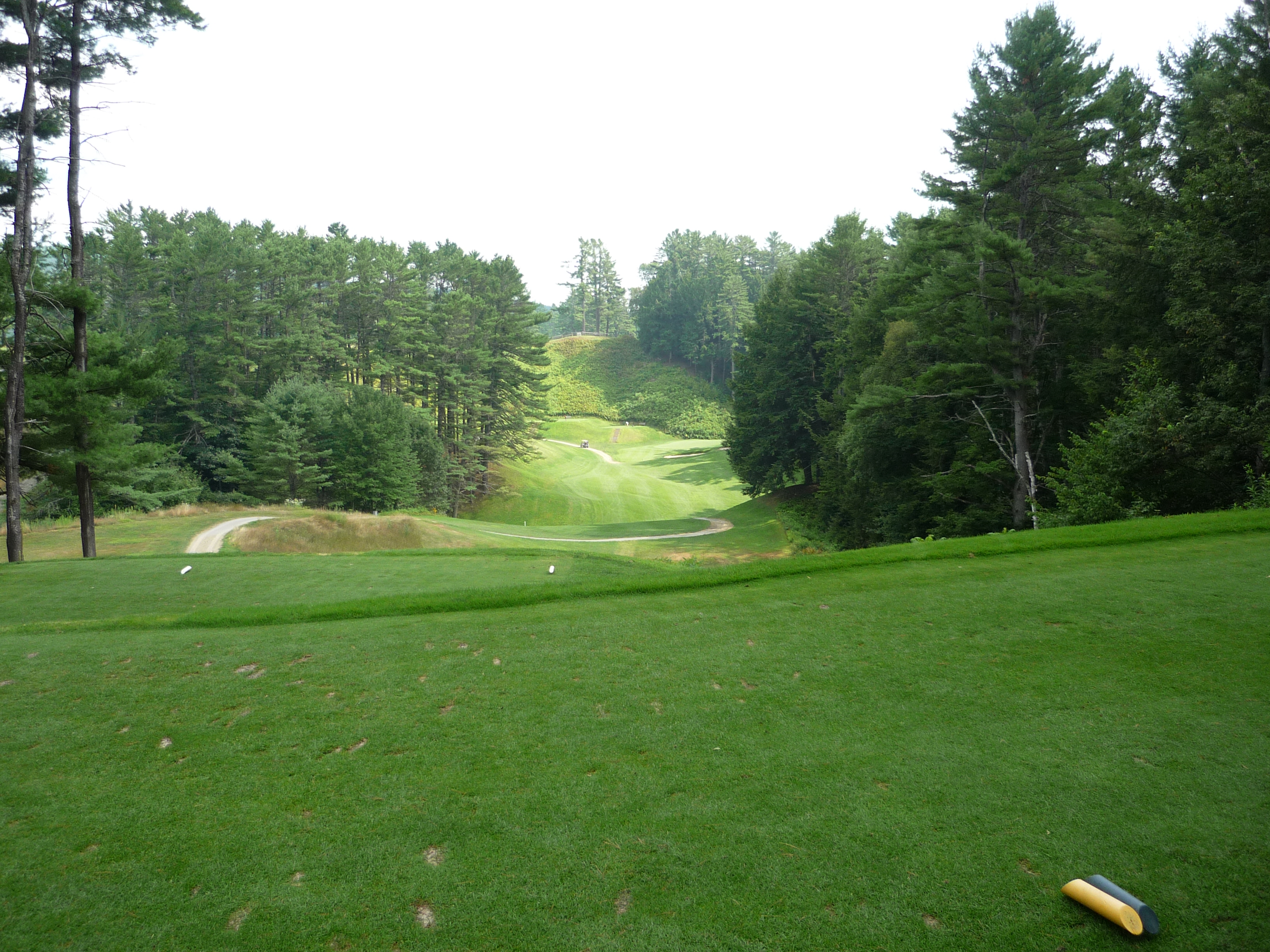
Hanover Country Club – Played 2012
- Rankings: None of the four lists
- Location: Rope Ferry Road, Hanover, New Hampshire
- Year: 1899
- Original Architect: Orrin Smith
- Additional Work By: Ralph Barton & Ron Prichard
- Course Access: Semi-private
- Walking Rules: Carts Available
Score Card Information:
- Green: 6,472 yards, Par 71, 71.5 Rating/124 Slope
- Blue: 6,142 yards, Par 71, 69.7 Rating/123 Slope
- Gold: 5,778 yards, Par 72, 67.9 Rating/118 Slope
- White: 5,330 yards, Par 72, 66.4 Rating/107 Slope
- Red: 4,835 yards, Par 72, 68.2 Rating/122 Slope
If you like old-school New England golf then Hanover Country Club is definitely for you. Just take a look at the clubhouse.
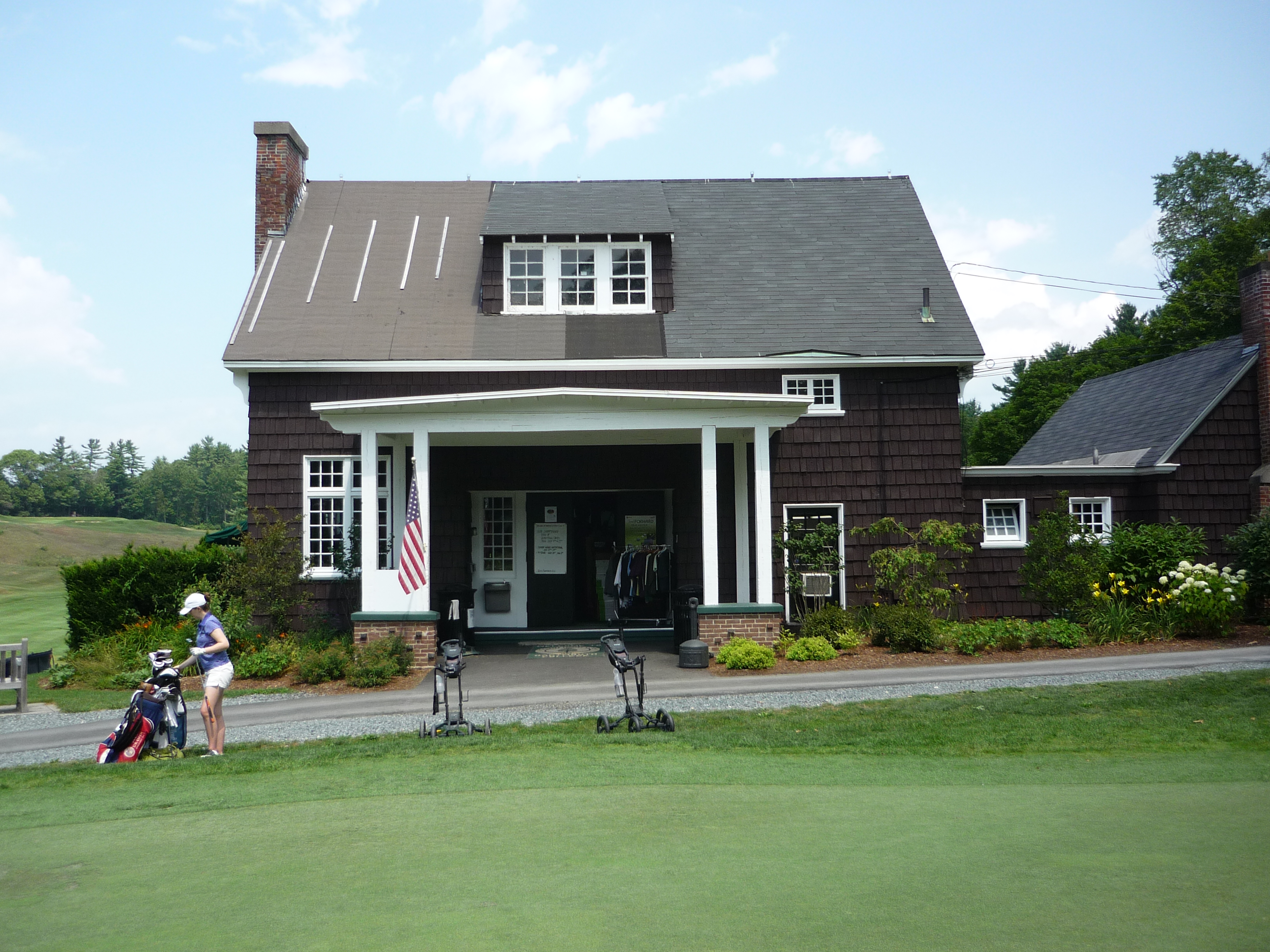
The course is affiliated with Dartmouth College, a bastion of the Ivy League, and is semi-private. It was constructed in 1899 as a nine-holer, but gifts from an alumnus allowed for the expansion to eighteen holes in 1922. Orrin Smith is credited with the original eighteen-hole design. His former work experience included the position of a construction superintendent for Donald Ross and Willie Park, Jr. Due to overcrowding, an additional nine was added by an alum named Ralph Barton who had apprenticed under C.B. Macdonald and Seth Raynor. Four holes of this remain as a wonderful practice facility for Dartmouth students, the golf team, and club members. While not designed by the biggest names in early American architecture, Hanover Country Club is only separated from these legendary architects by one degree.
In 2000, the course underwent a renovation by Ron Prichard who was experienced in renovating Donald Ross courses. The project resulted in four new holes and all new tees and greens.
There are five teeing options ranging from 6,472 to 4,835 yards. I decided to play the tips, which played to a par of 71. The course gets to that par in an interesting way since the front nine par is 34. The front side has no par fives, while the back has three resulting in a par of 37. I was lucky again to have my wife on camera duty. Enjoy!
Hole 1 – 417 yards – Par 4
The course opens with a solid hole. This one plays uphill making the best shot a draw just inside the right bunker to get some roll.
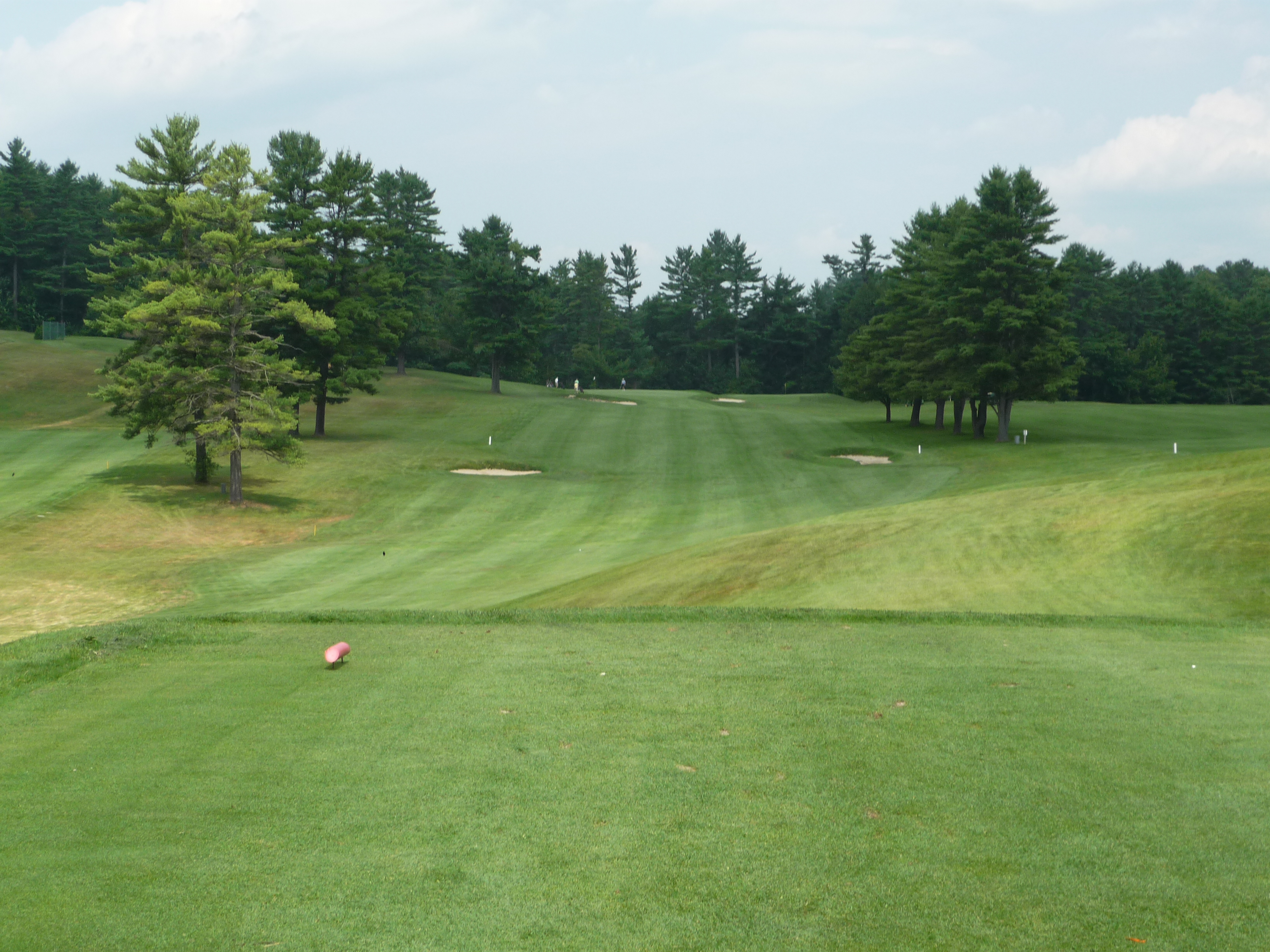
The green has a false front and is crowned on the sides. It’s best to just get something in the middle of the green and take your two-putt here.
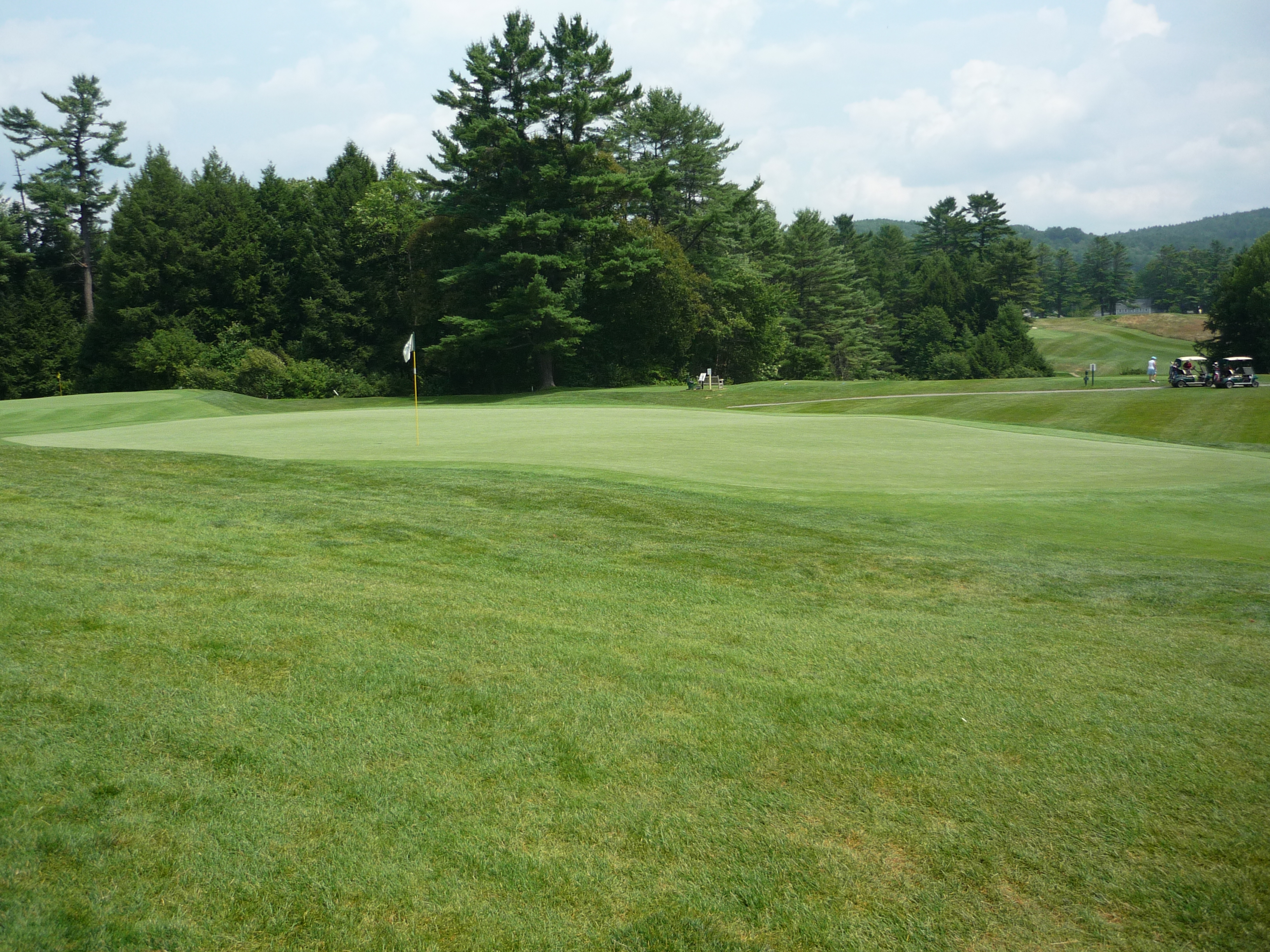
Hole 2 – 418 yards – Par 4
The second is a long hole that bends to the right. The tee shot is wide open with essentially three fairways. A drive down the middle with a little cut works best here.
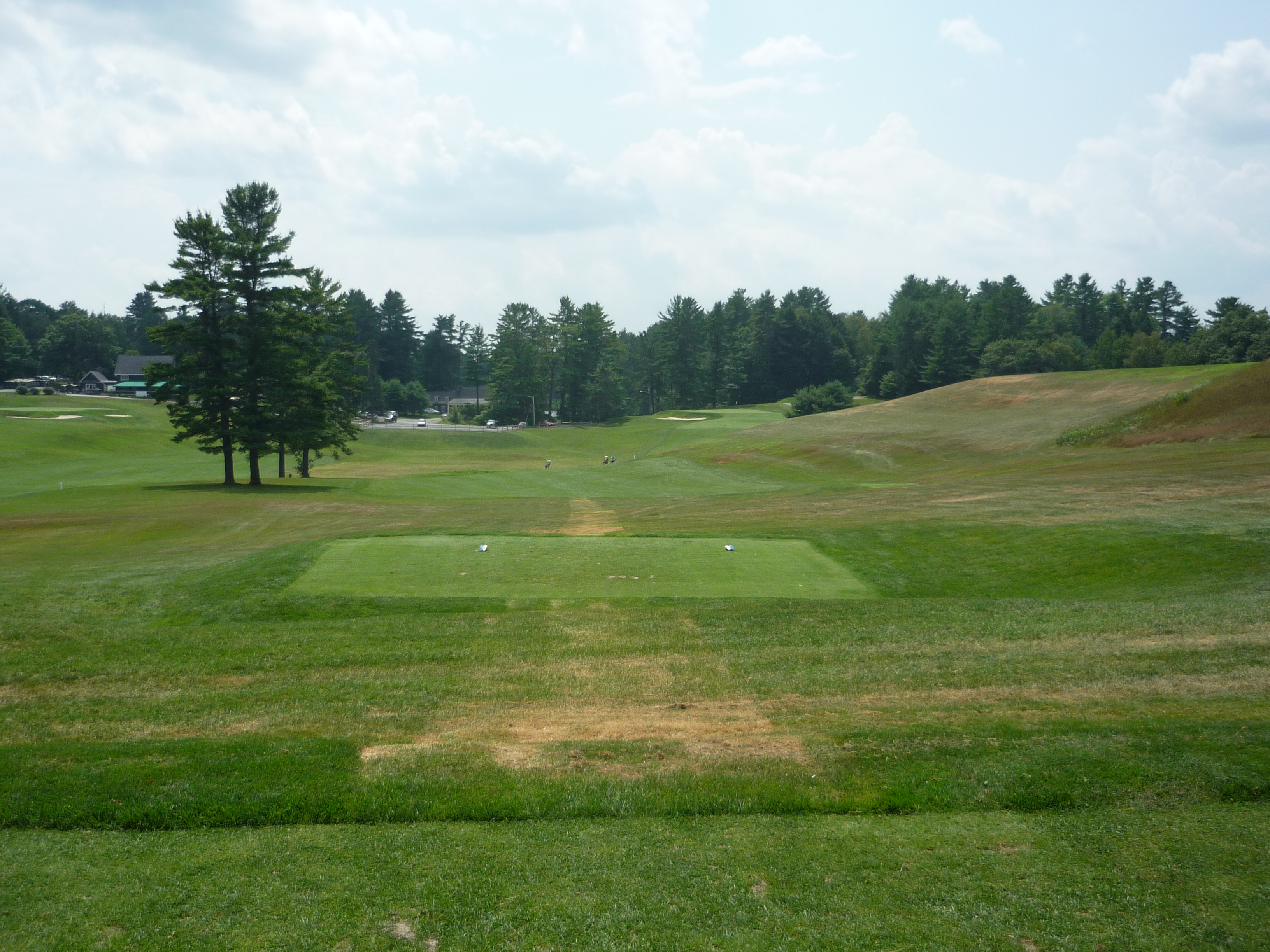
The approach shot, seen below, plays to a raised green.
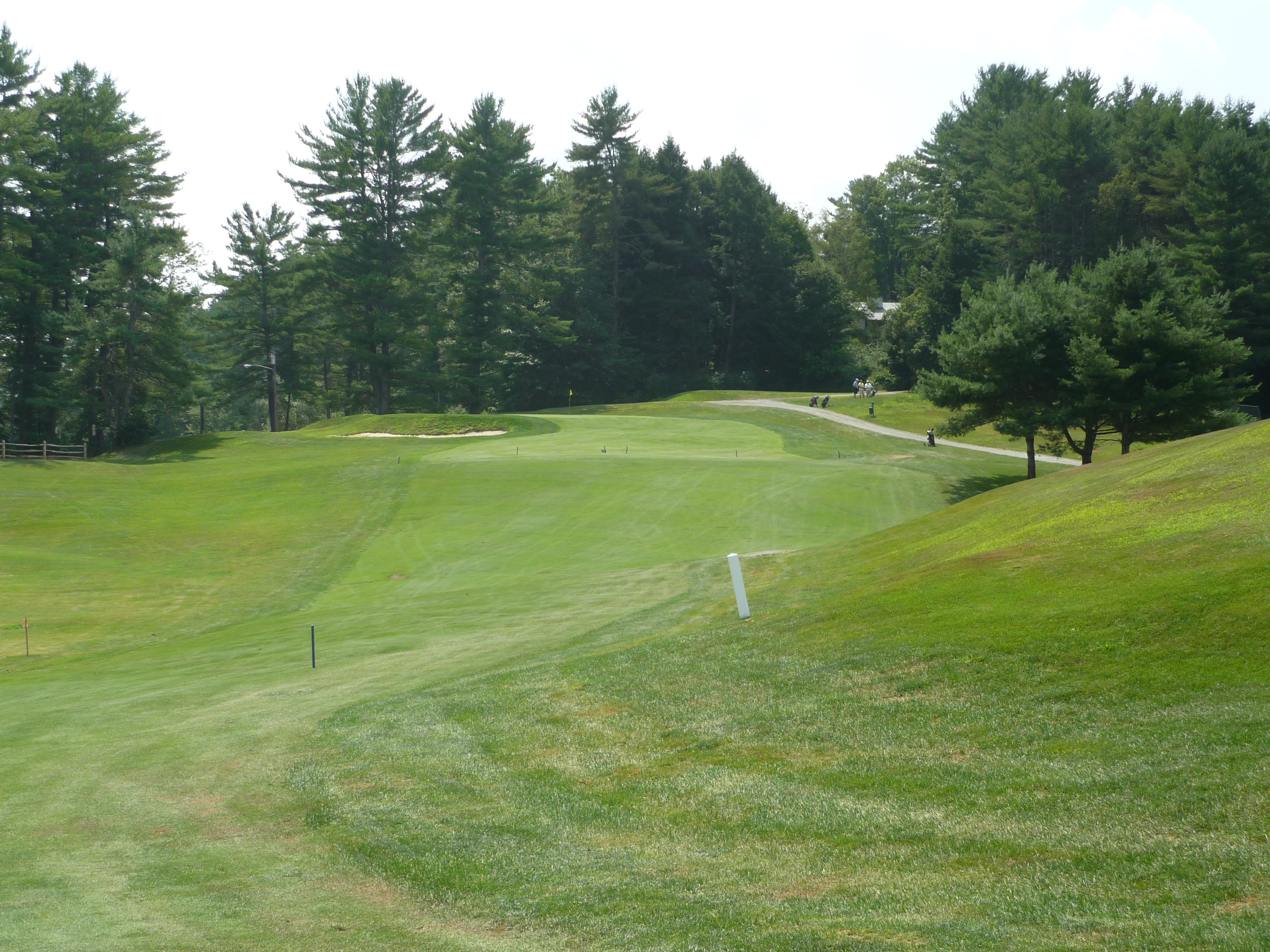
This is a shot of the green from the left side. Not too much going on here with just a little crown on this surface.
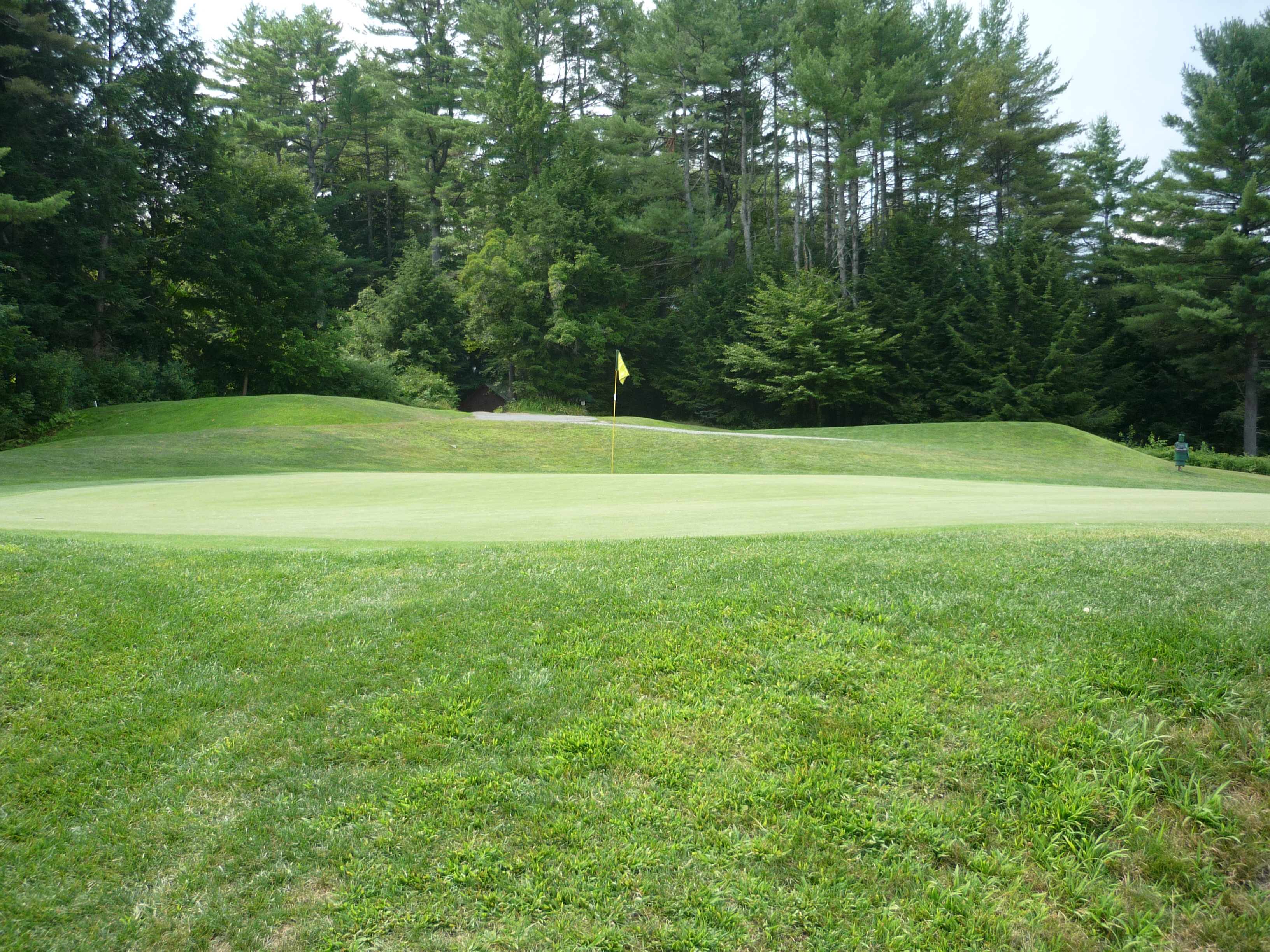
Hole 3 – 307 yards – Par 4
This was a really neat short par four. Its main protection is the uphill slope. I played a 210 yard shot up the middle.
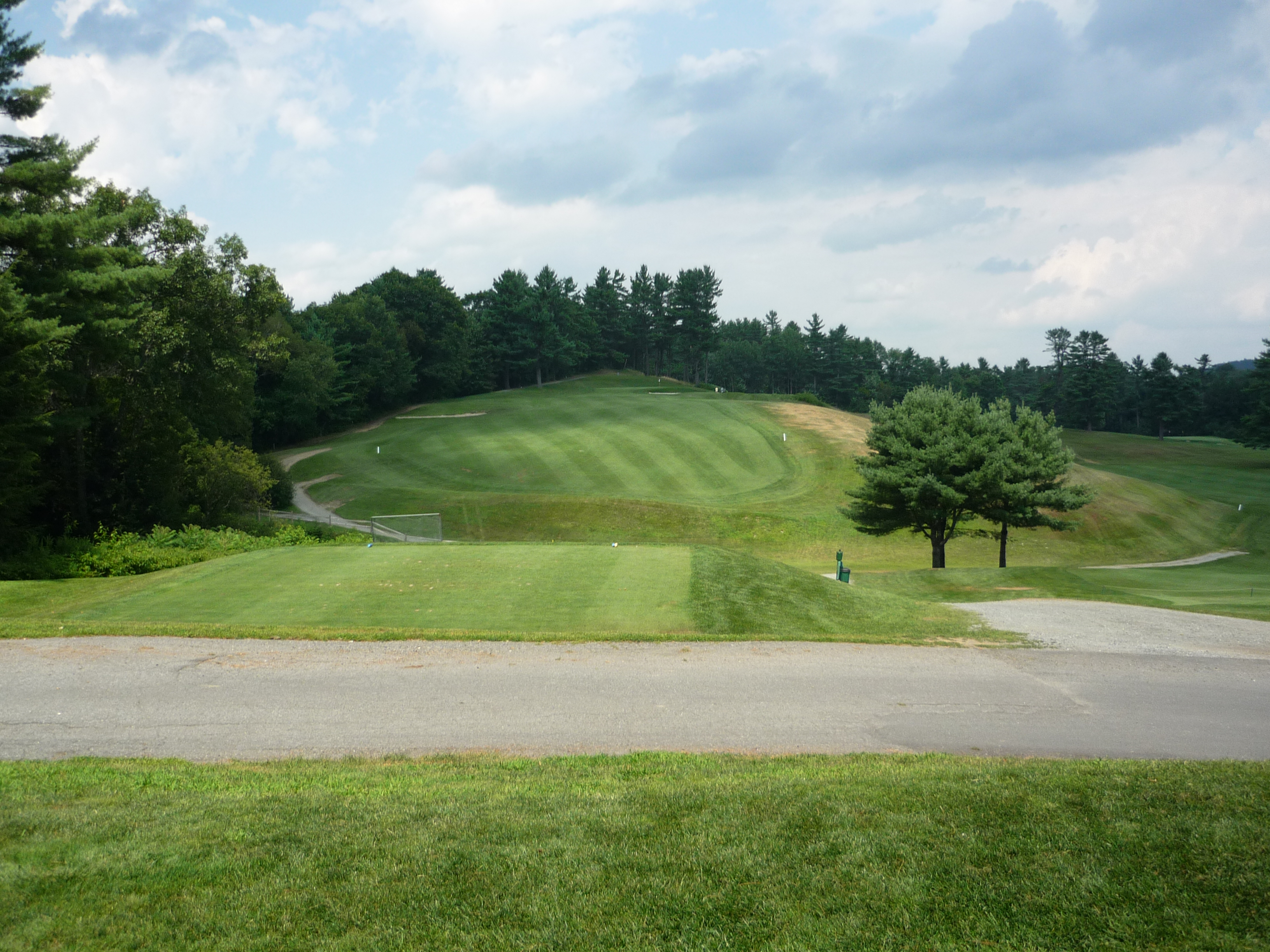
Much like the last hole, this green is raised and you can only see part of the flagstick. Distance control is a must here.
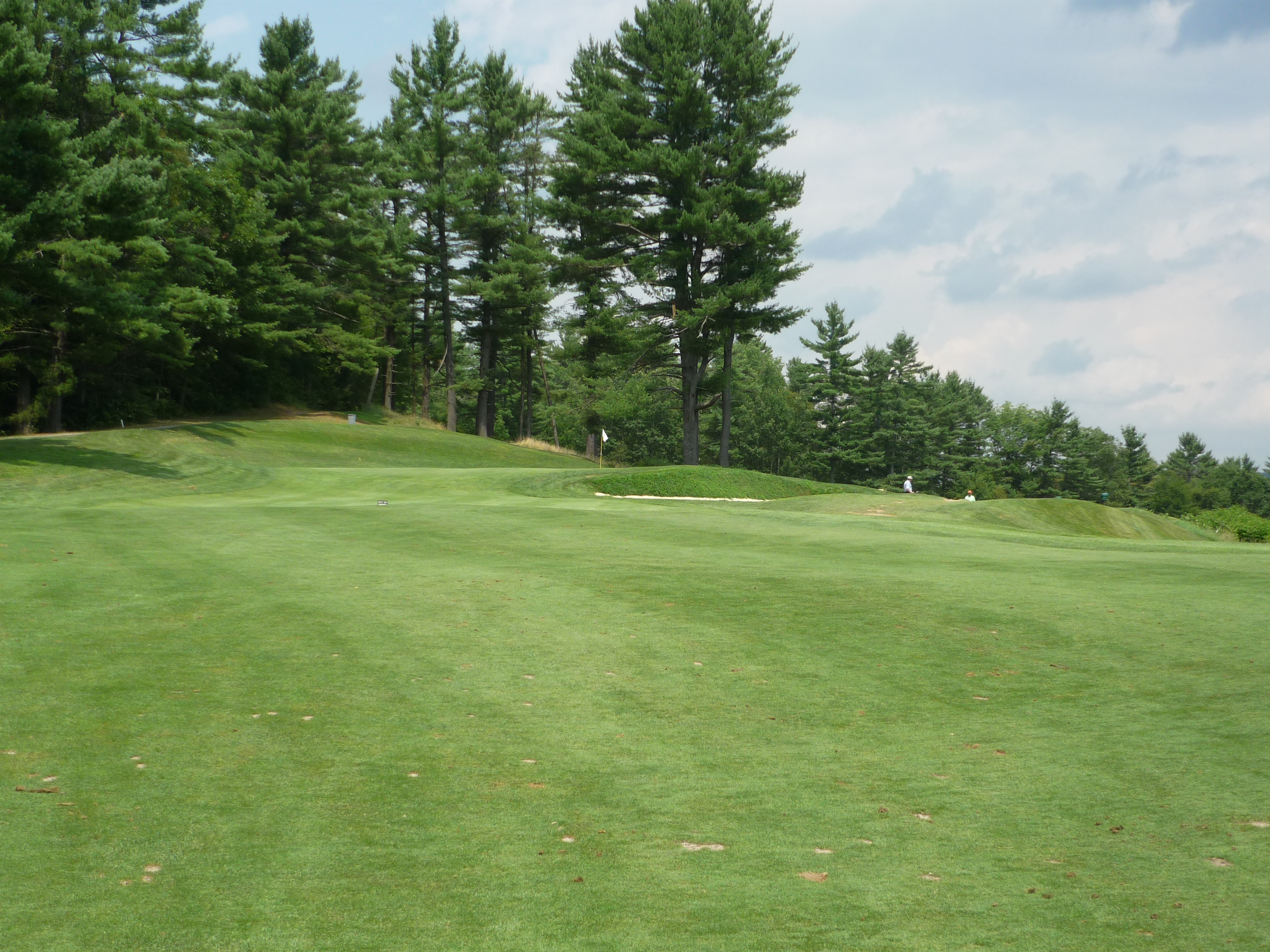
Hole 4 – 124 yards – Par 3
This is just a straightforward one-shotter. Take a wedge and knock it close.
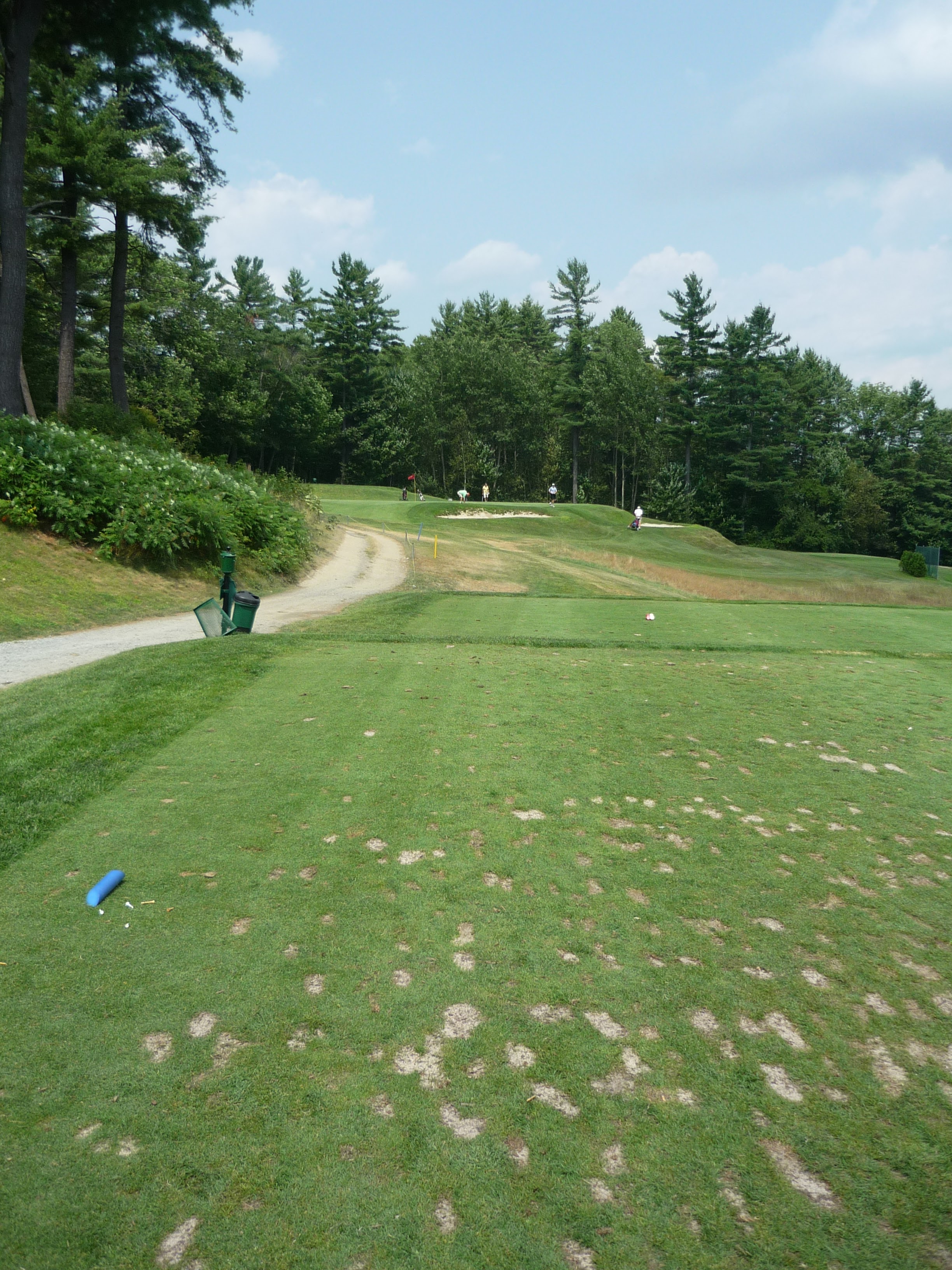
Hole 5 – 204 yards – Par 3
A change from the conventional with back to back par threes. This seemed to be more common in the older courses. Unlike the last hole, this one is a long tee shot. It is, however, helped by the downhill grade.
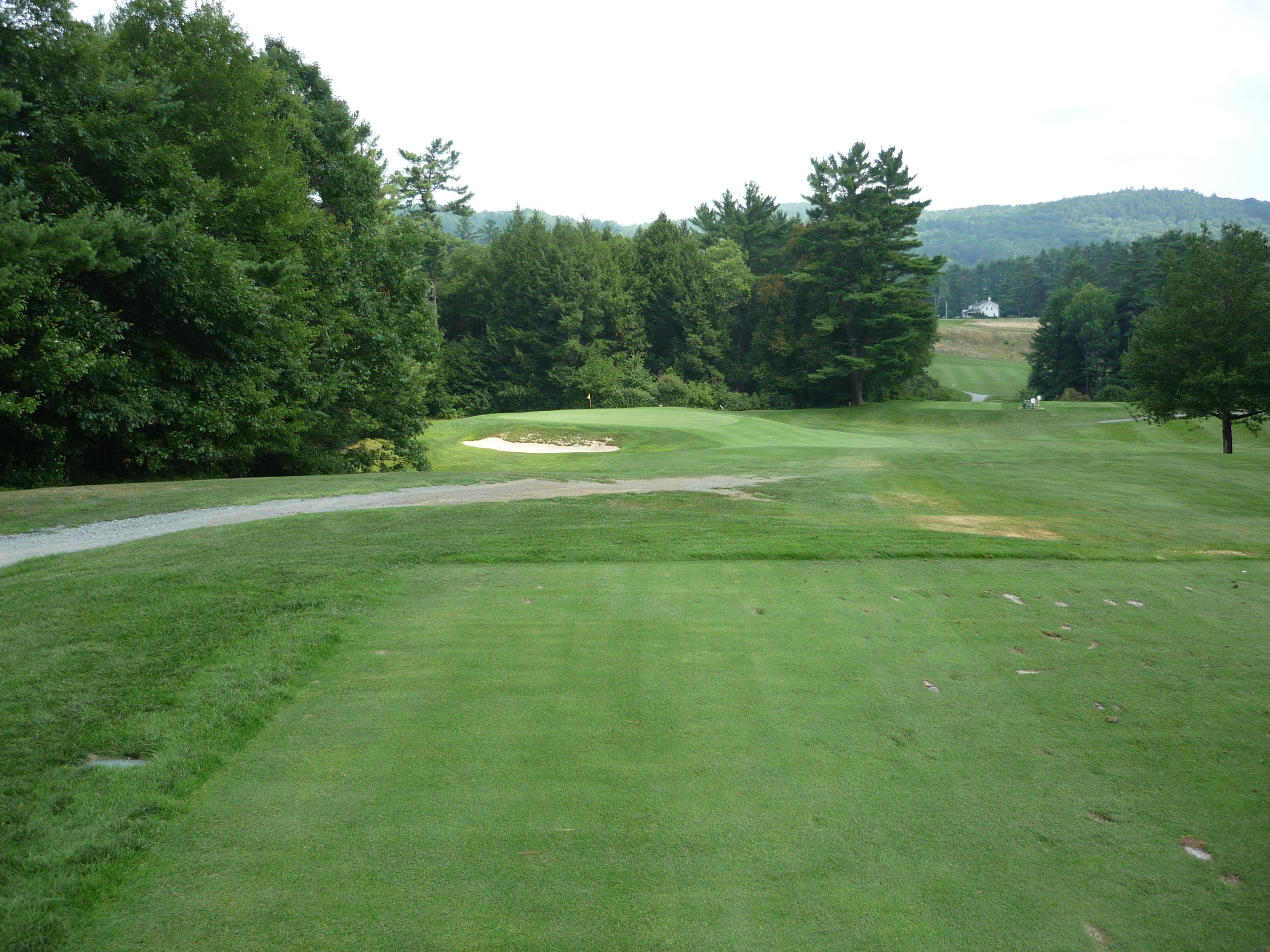
This shot shows the gentle slope of the green from left to right.
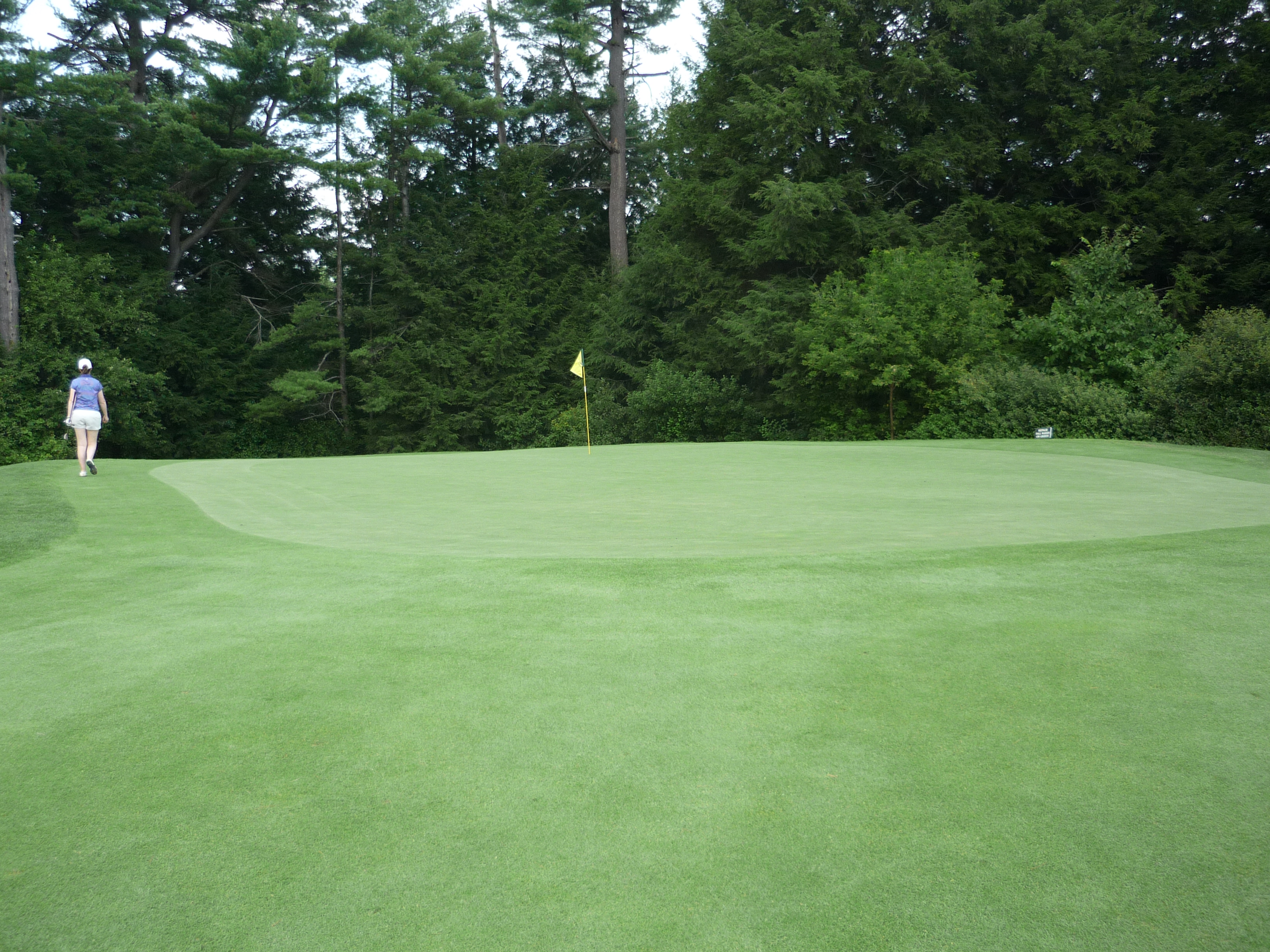
Hole 6 – 362 yards – Par 4
This tee shot is not as tight as it looks in the photo. It opens up and doglegs left after the trees seen here.

The approach shot plays uphill yet again on this hole so play a little more club.
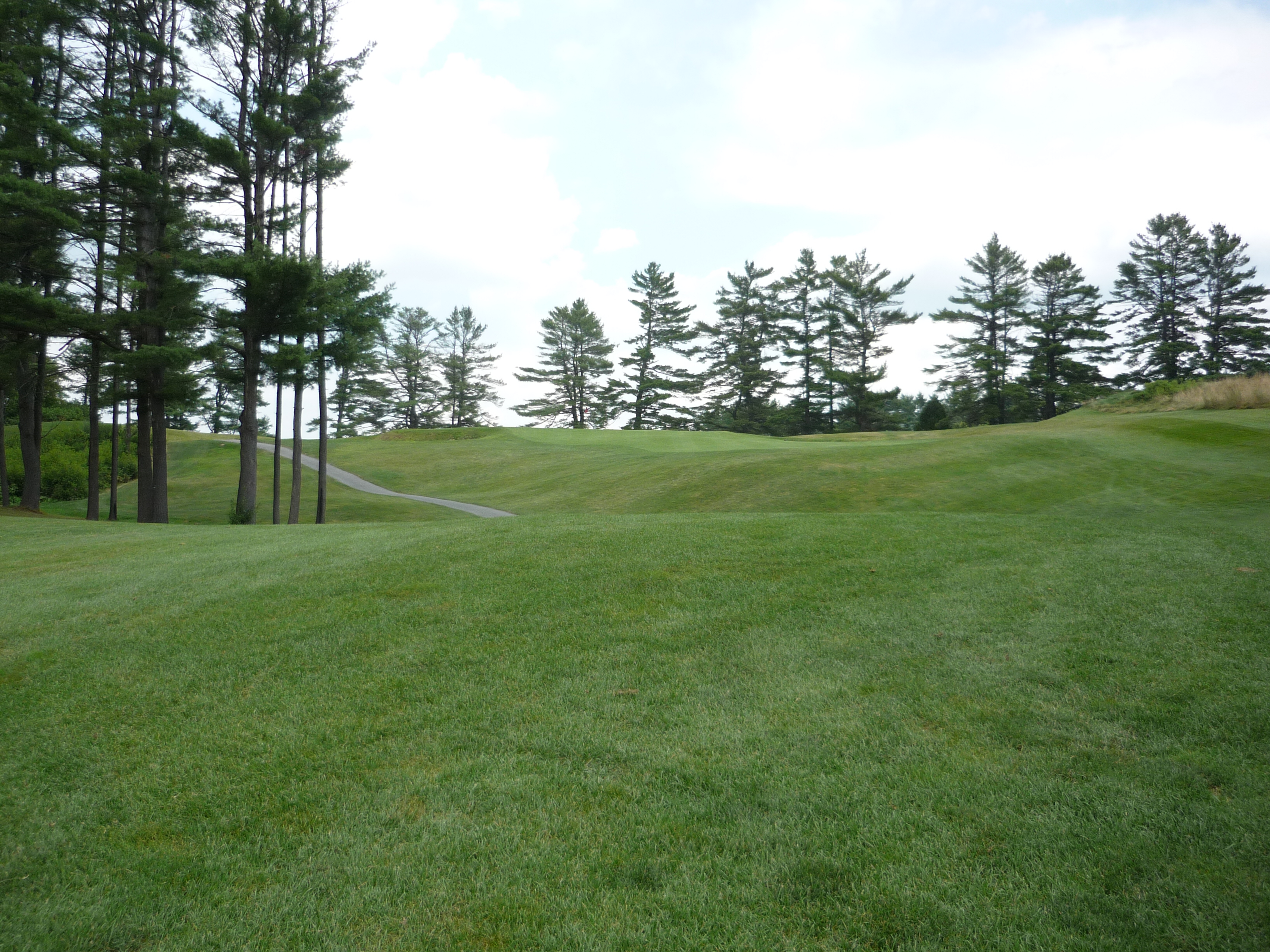
Here is a shot of the rather nondescript green.
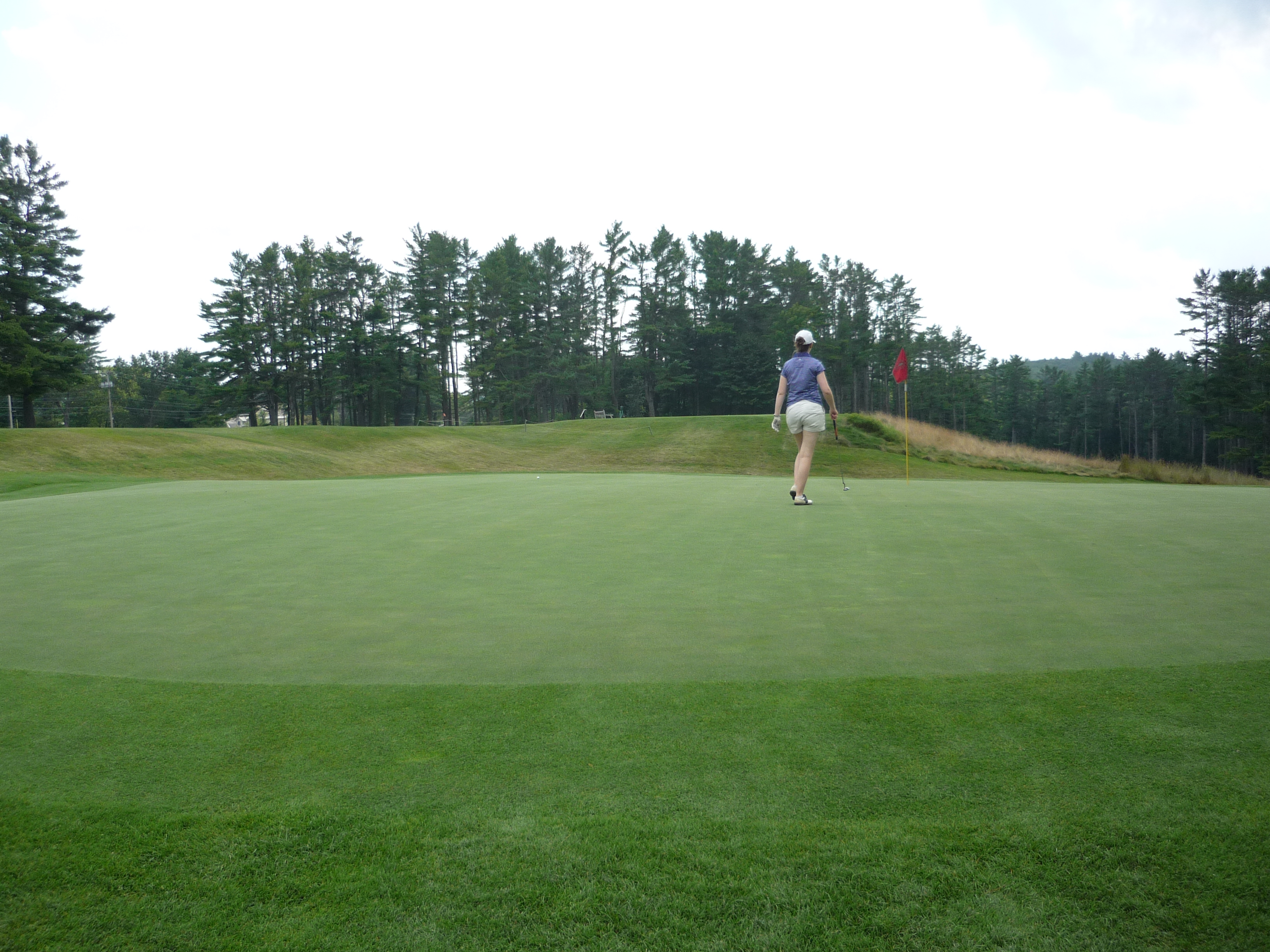
Hole 7 – 413 yards – Par 4
The tee shot, seen here, really calls for a long cut. The trees down the left are definitely in play.
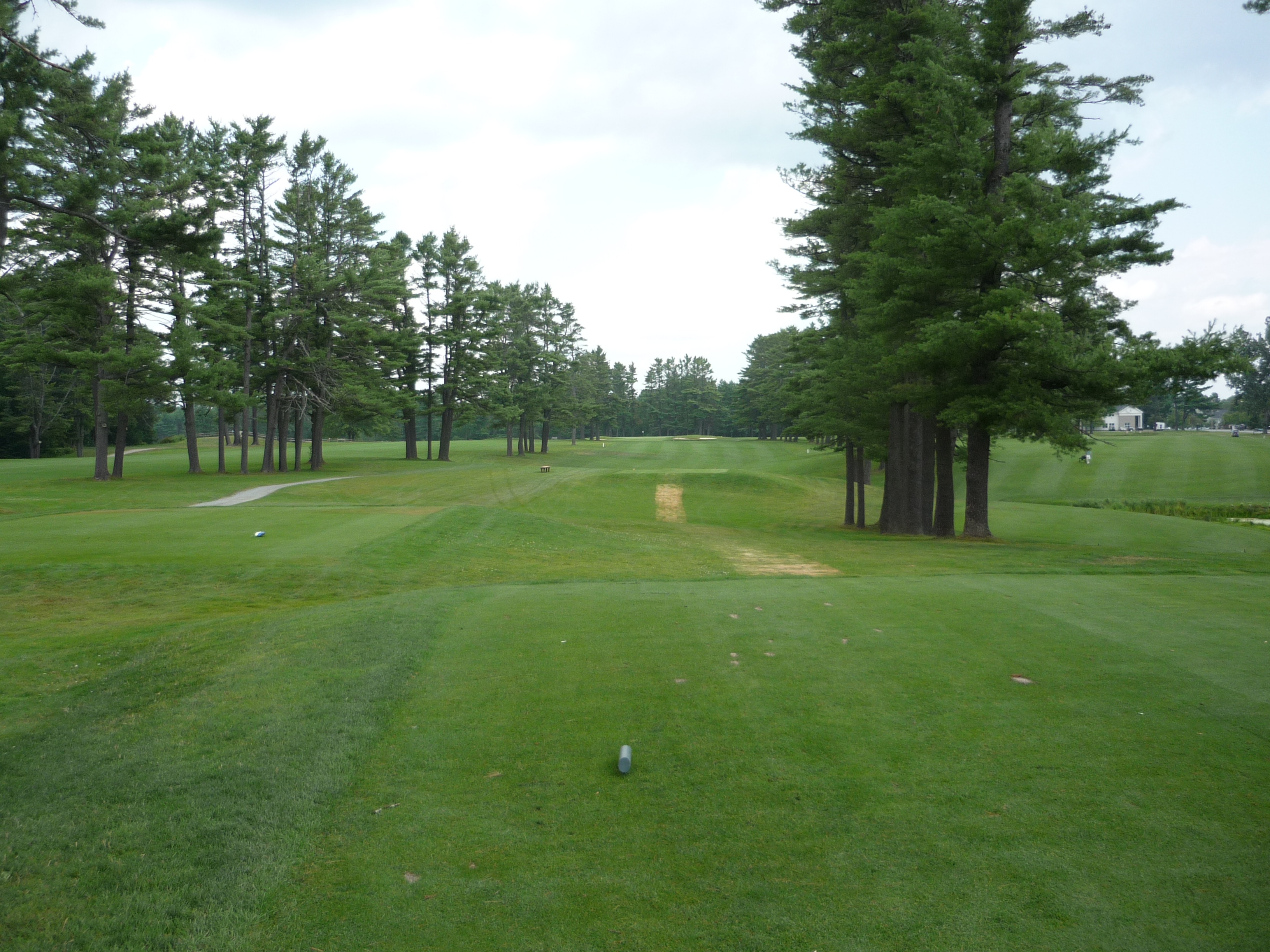
Here is a shot of the approach. Middle of the green to avoid the bunkers on the right will work just fine.
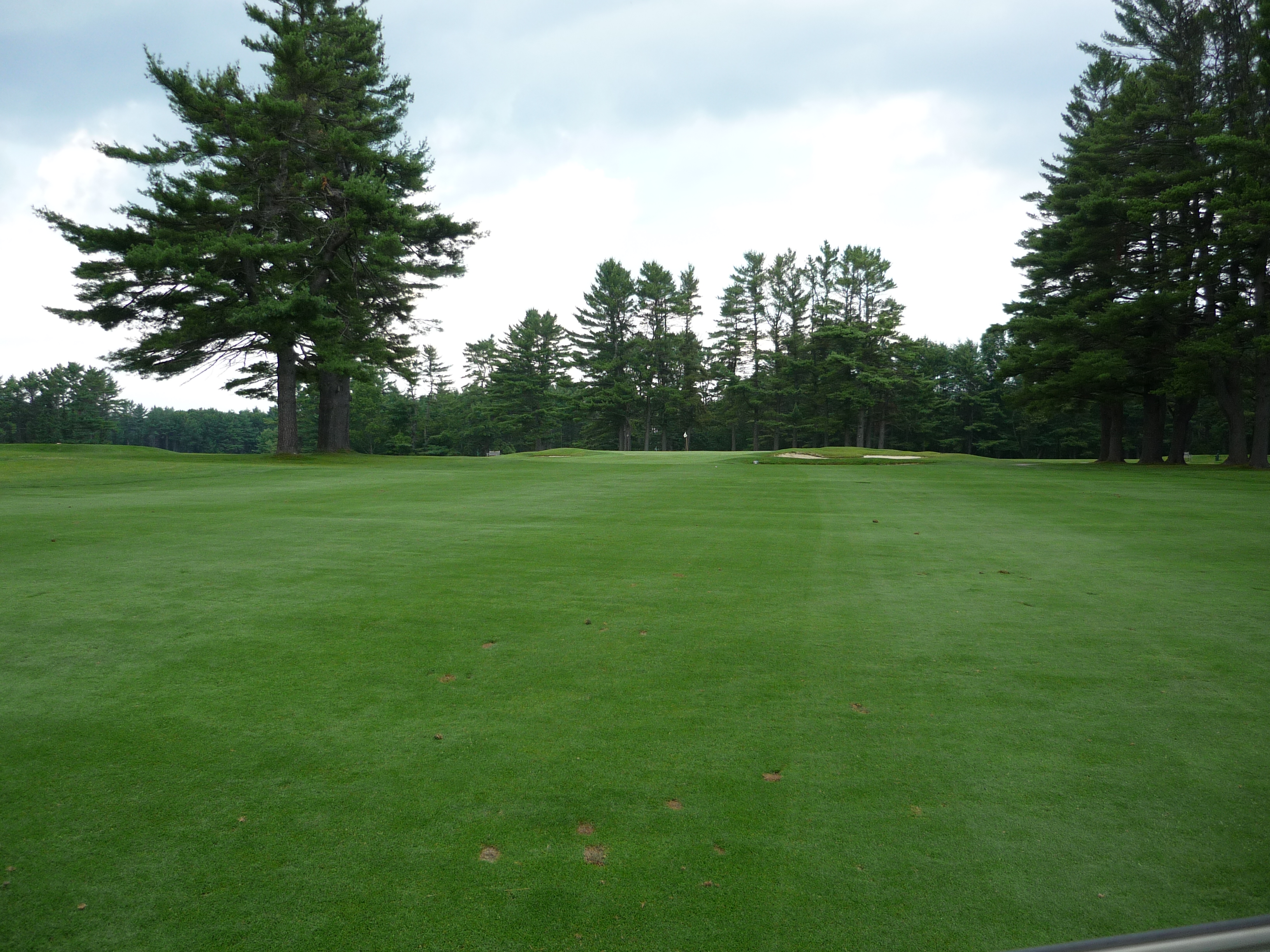
The green is pretty flat which should allow you to take advantage of any shots on the green.
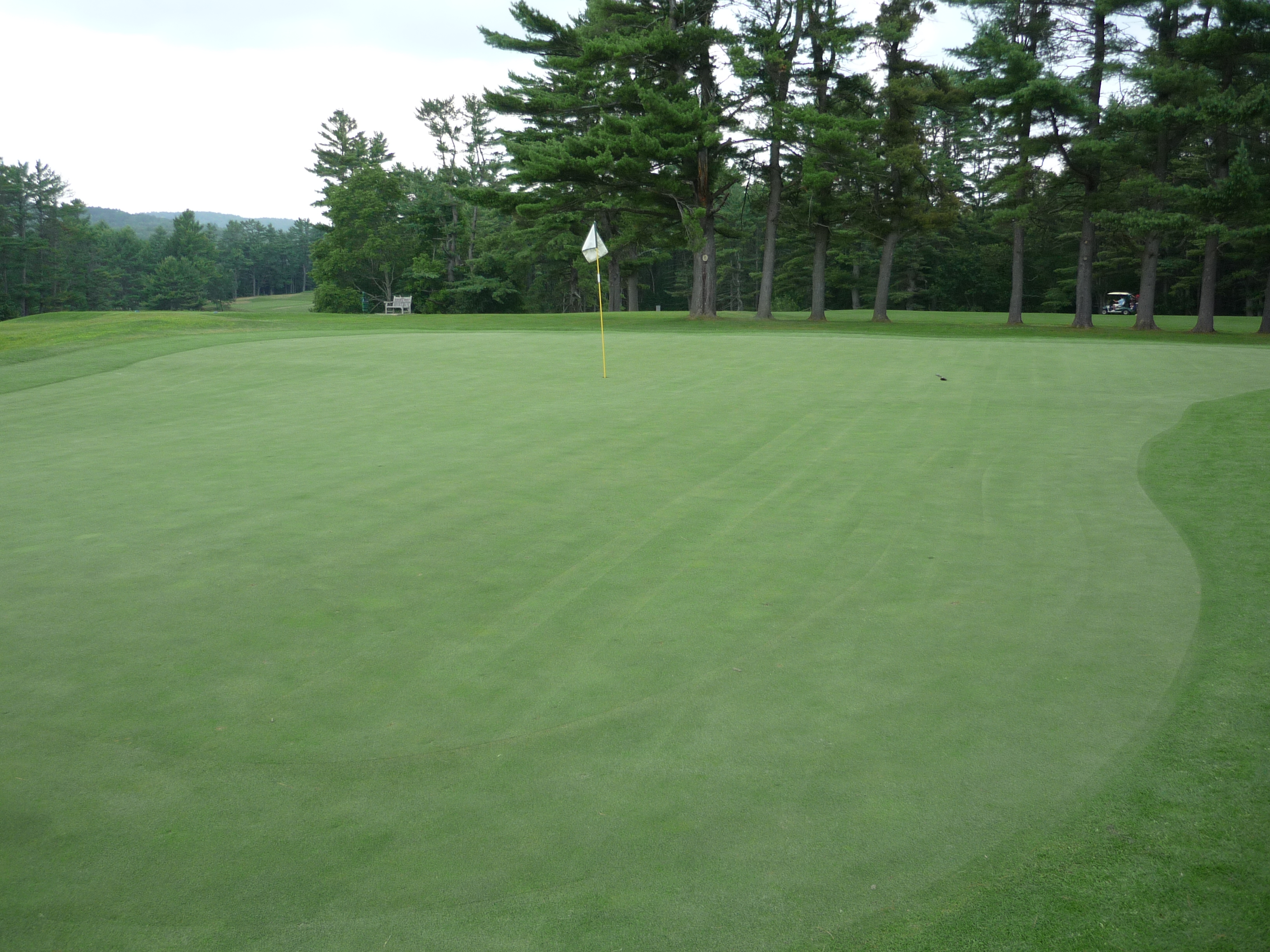
Hole 10 – 313 yards – Par 4
I didn’t get any shots of the eighth and ninth holes, but here is the tee shot on the tenth. It doglegs right and calls for a 200-yard shot.
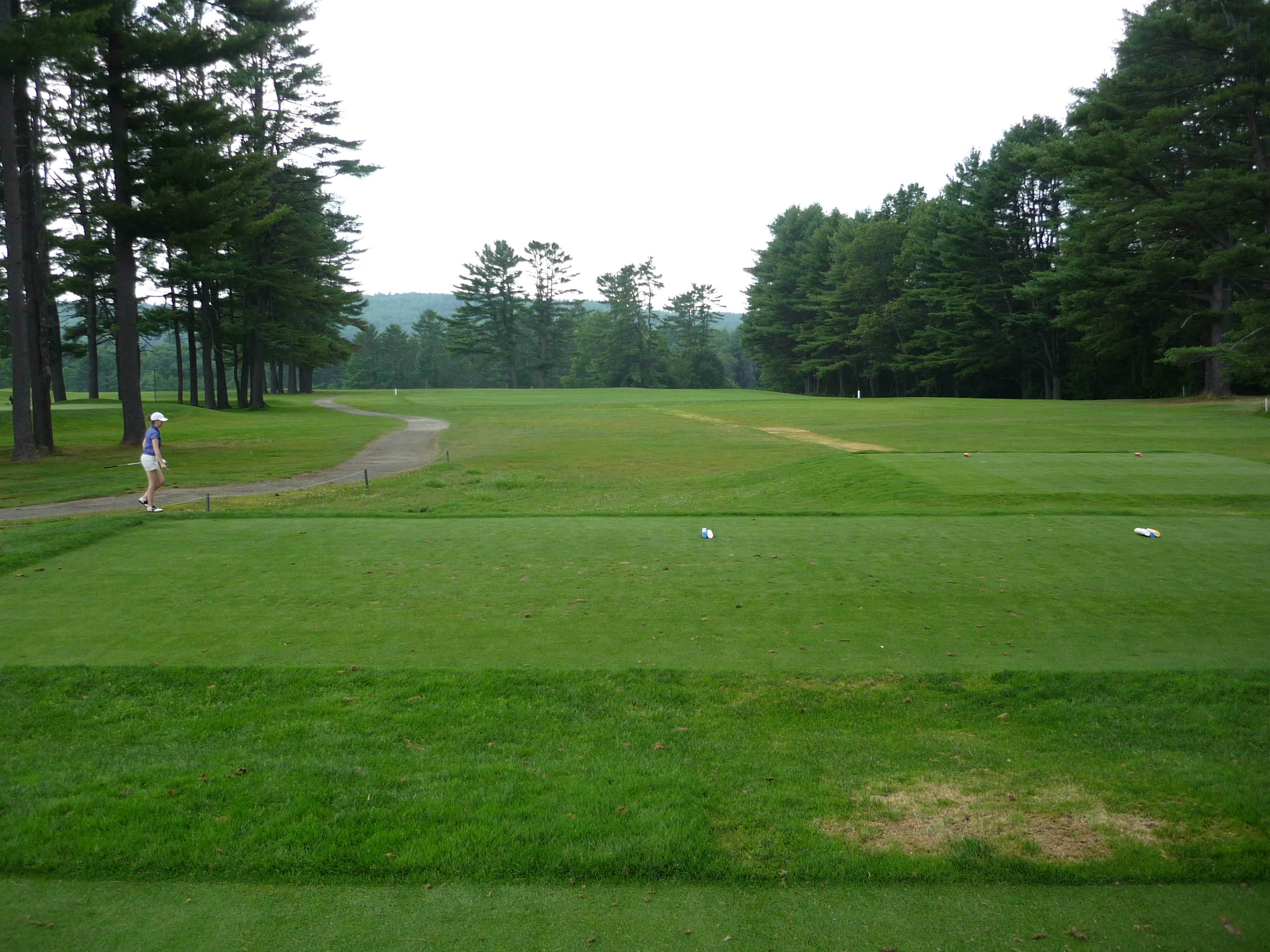
The approach shot into 10 plays downhill over a depression. A good tee ball will have you in a green light mode for this shot.
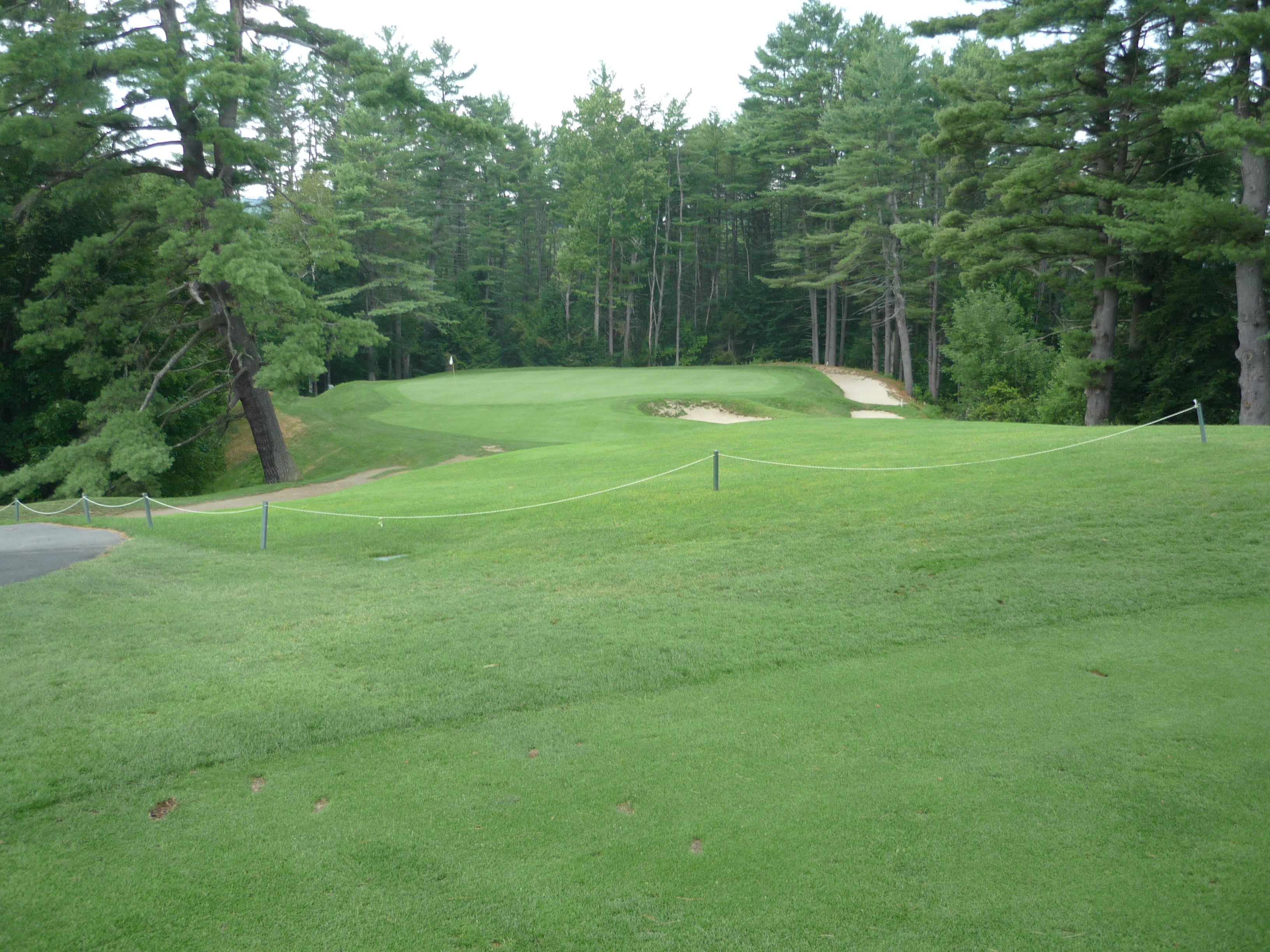
Hole 11 – 385 yards – Par 4
The eleventh plays up another hill. The bunkers on the right are in play, which I can guarantee.
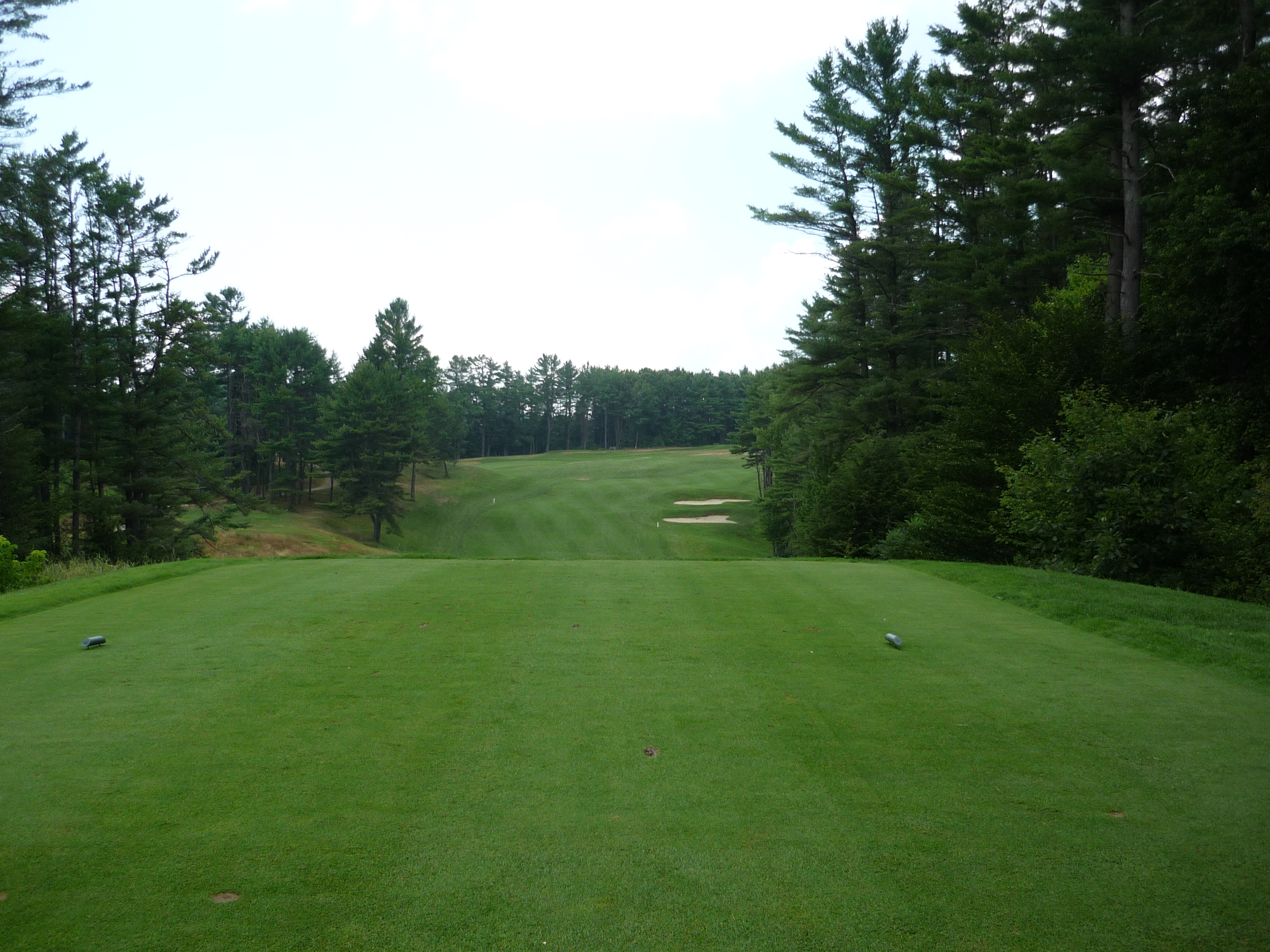
Here is a photo of the approach up a steep hill from the right bunker.
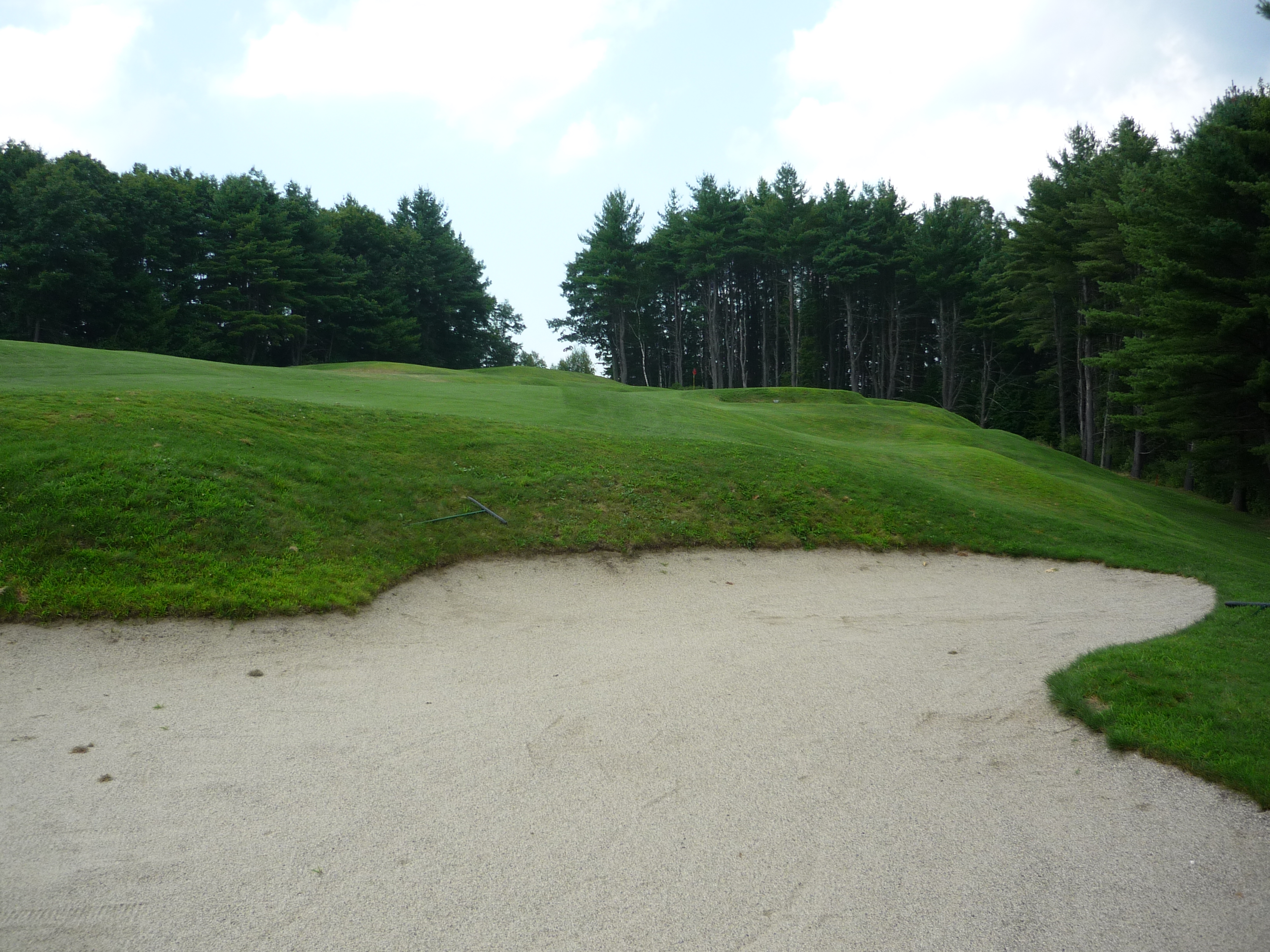
The green, as seen below, is relatively flat. It is best to avoid the drop off on the left side of the green that you see here.
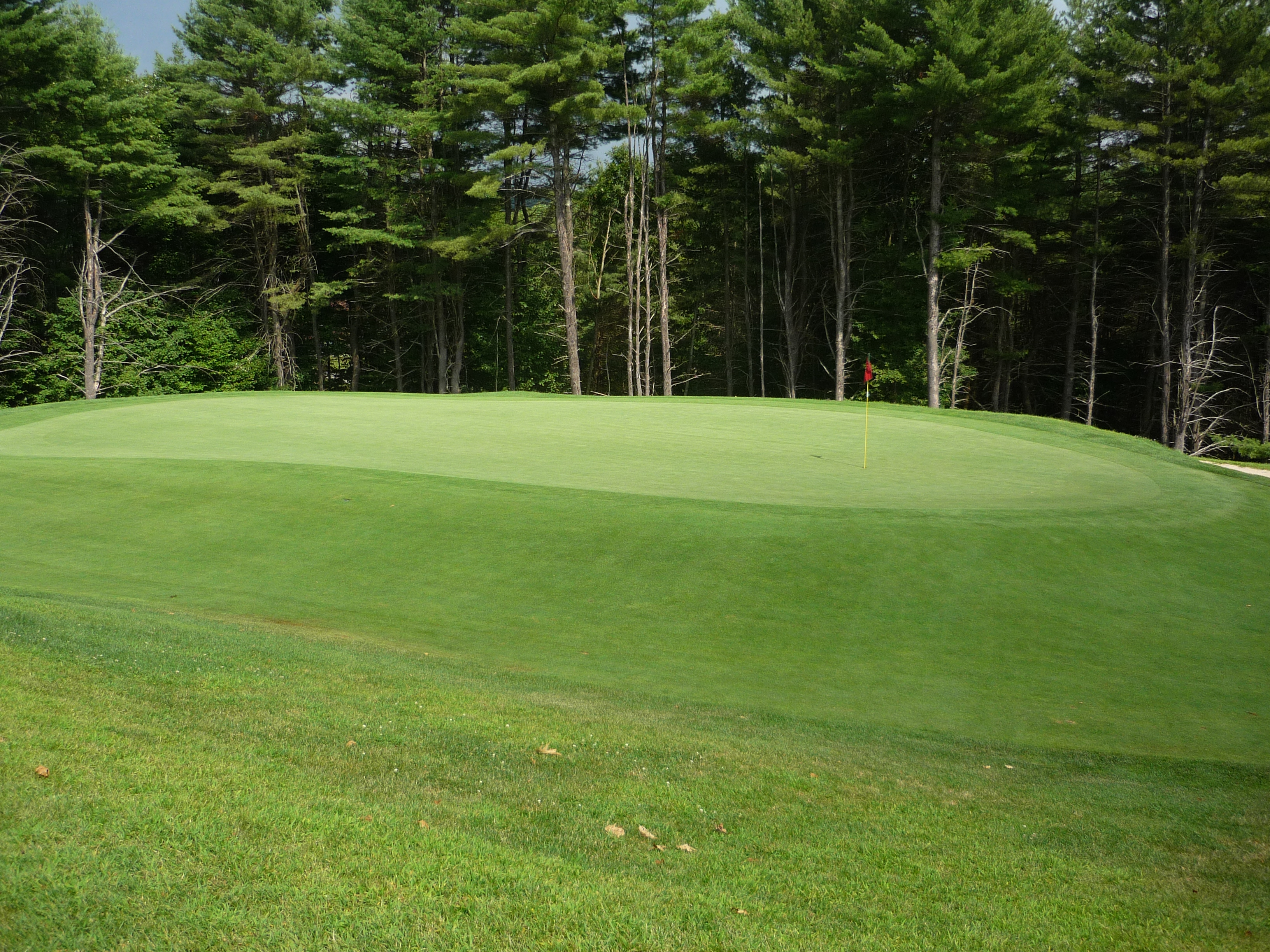
Hole 12 – 180 yards – Par 3
This is a medium-length par three. It drops off quite a bit to the right so your miss needs to be left. Overall, just a solid hole.
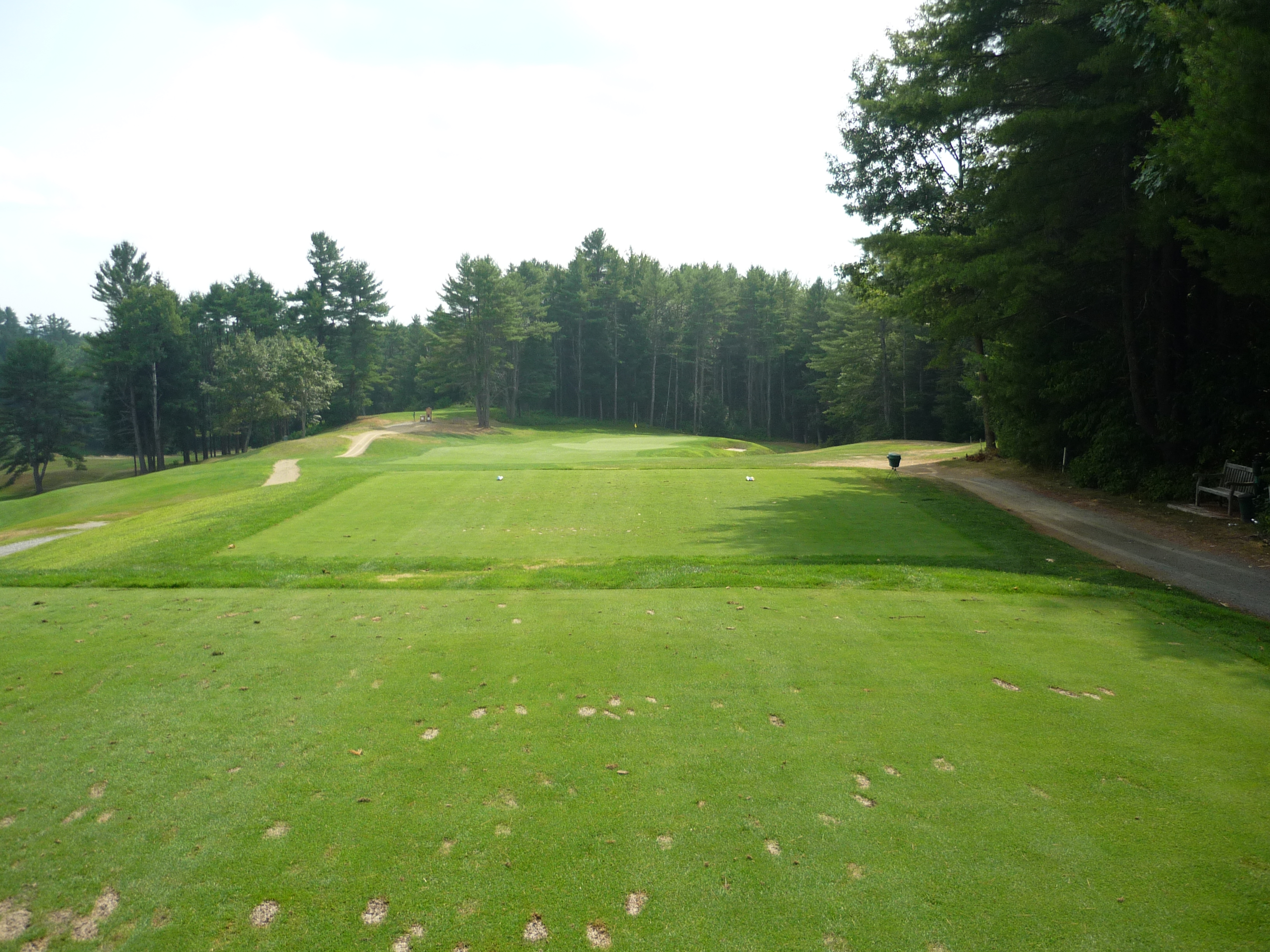
Here is a shot of the green showing the big swale in the middle of the green. It is imperative to be on the right level on this green
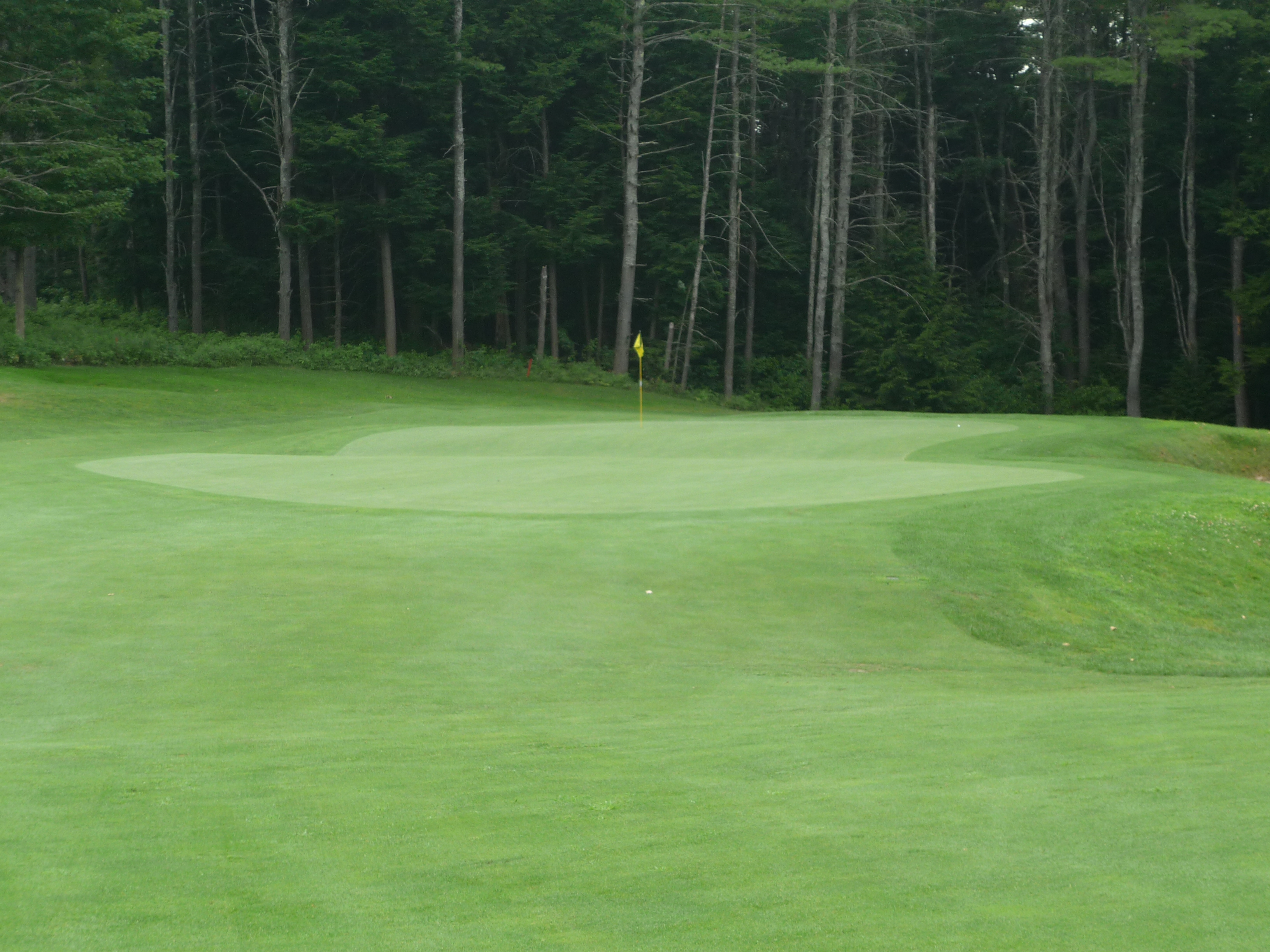
Hole 13 – 359 yards – Par 4
Get a load of this hole! It plays substantially downhill and rumor has it that it used to be a ski slope. A cut down the left tree line will work well here.

Here is a photo of the second shot. It plays back up the hill or the cross-country portion of the slope.
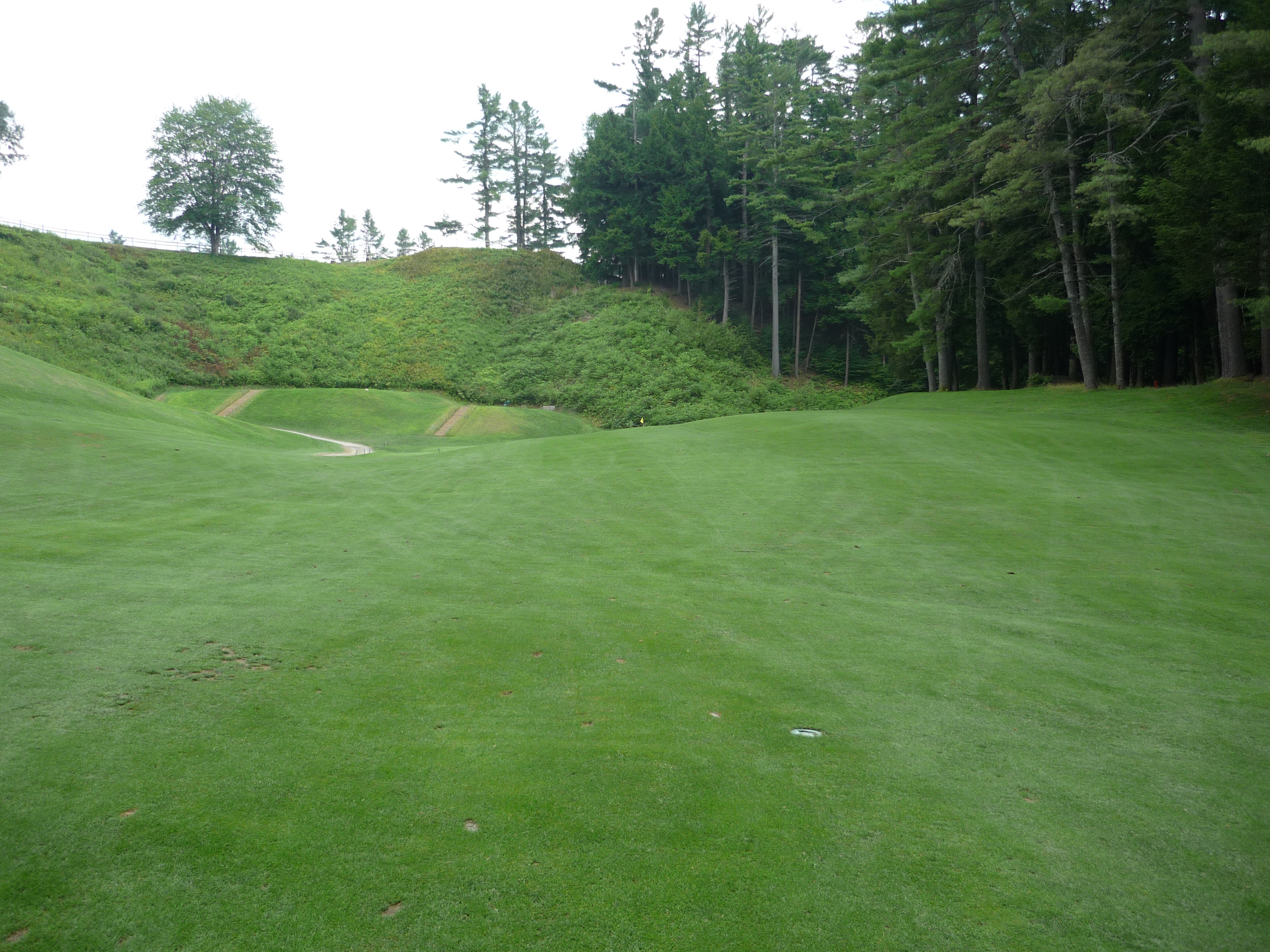
The photo below shows the entire hole looking back from the green.
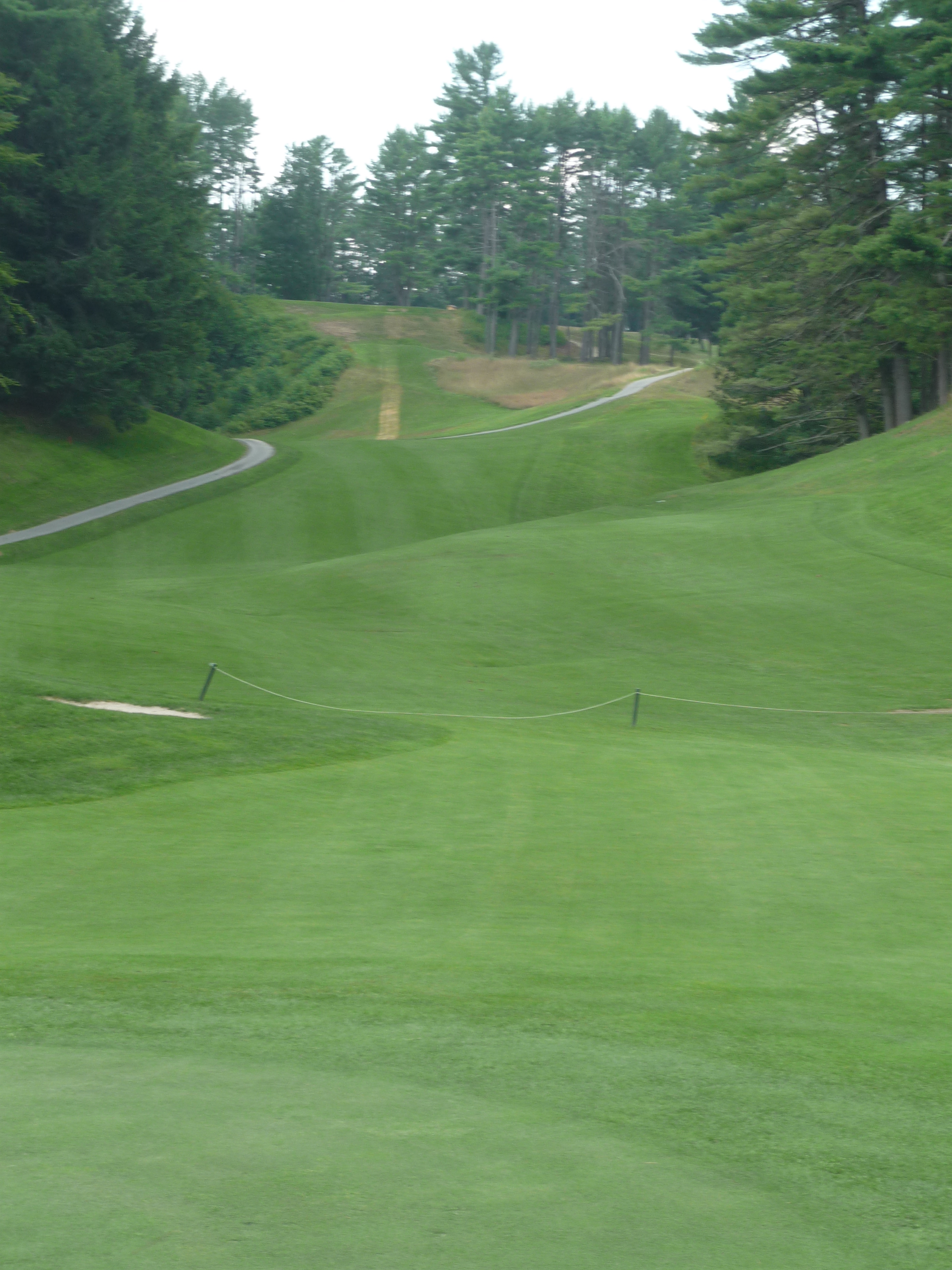
Hole 14 – 145 yards – Par 3
The tee shot here is straightforward to a flattish raised green.
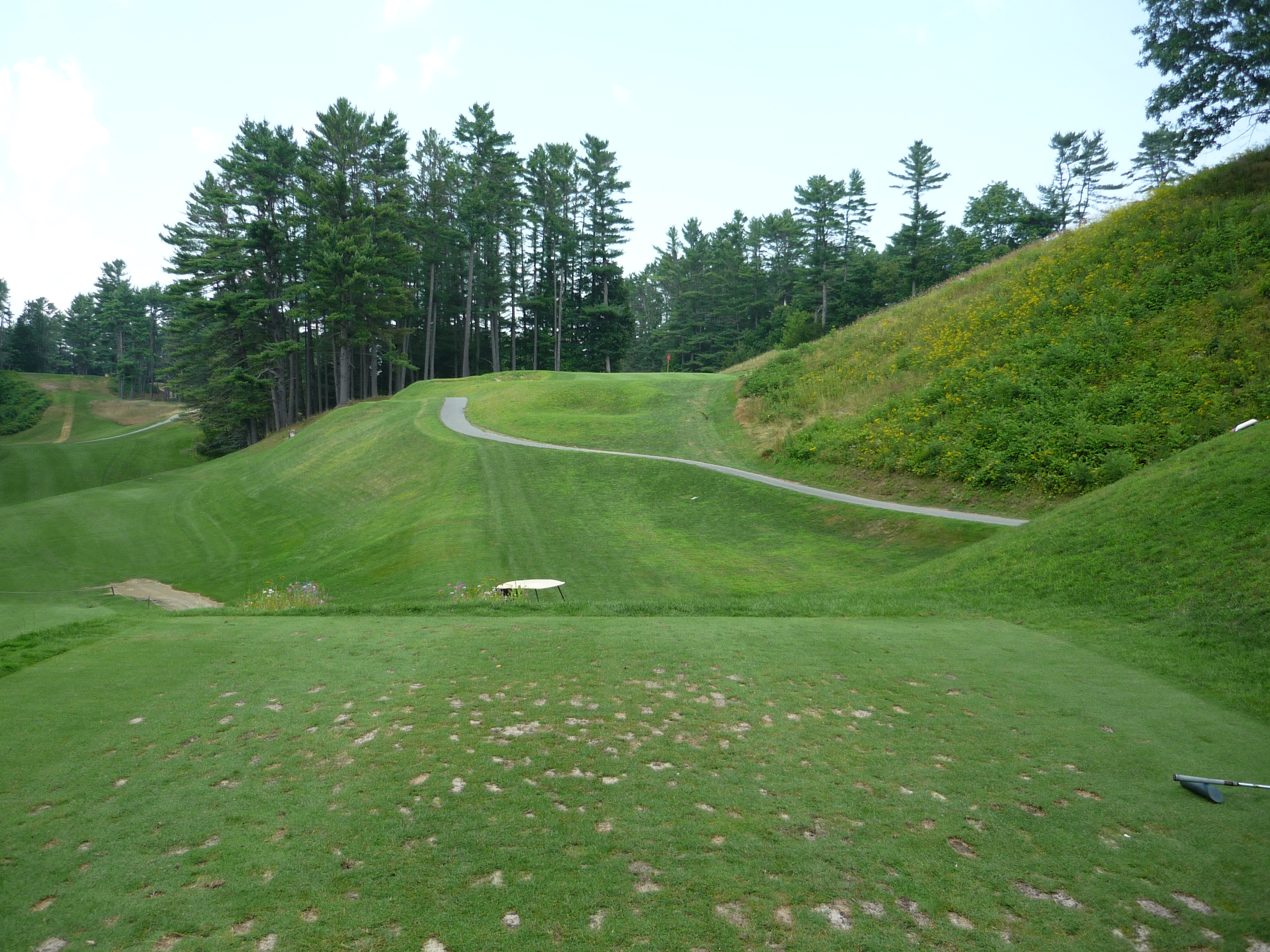
Hole 15 – 592 yards – Par 5
The fifteenth is a long par five and a definite three-shot hole. A long bomb up the middle is the play.
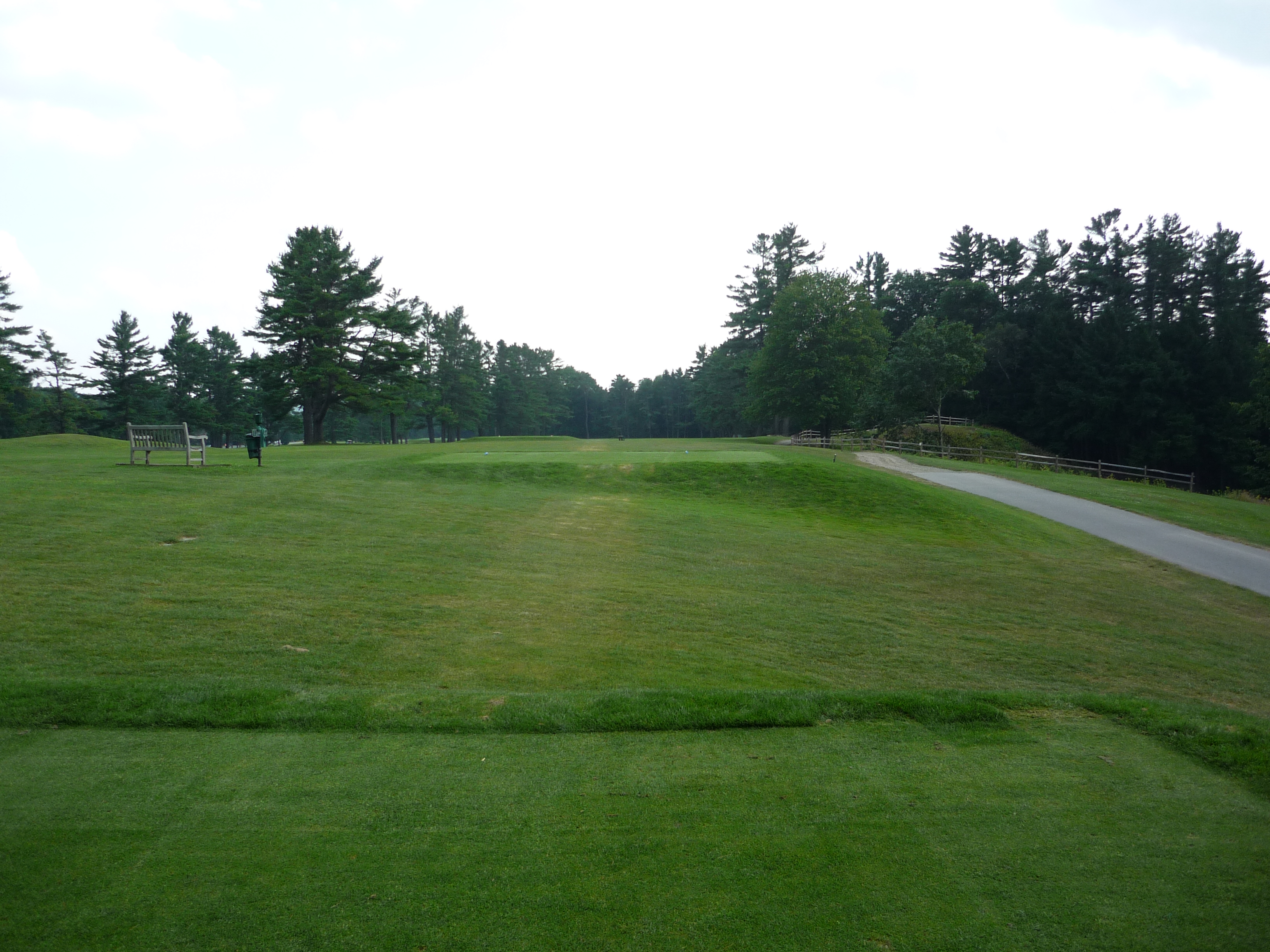
Here is the second shot. Another long draw will work.
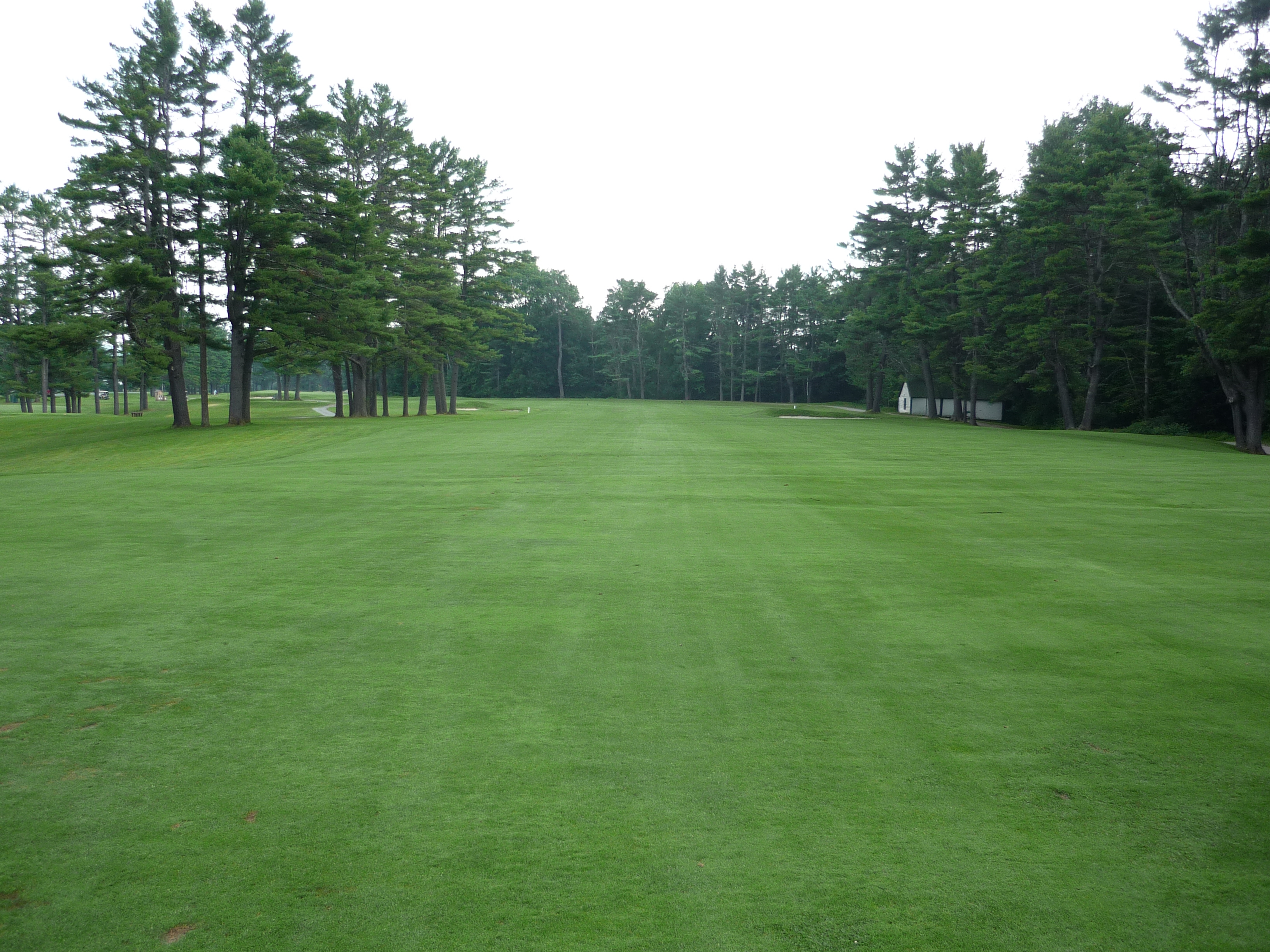
The approach shot to a slightly raised green.
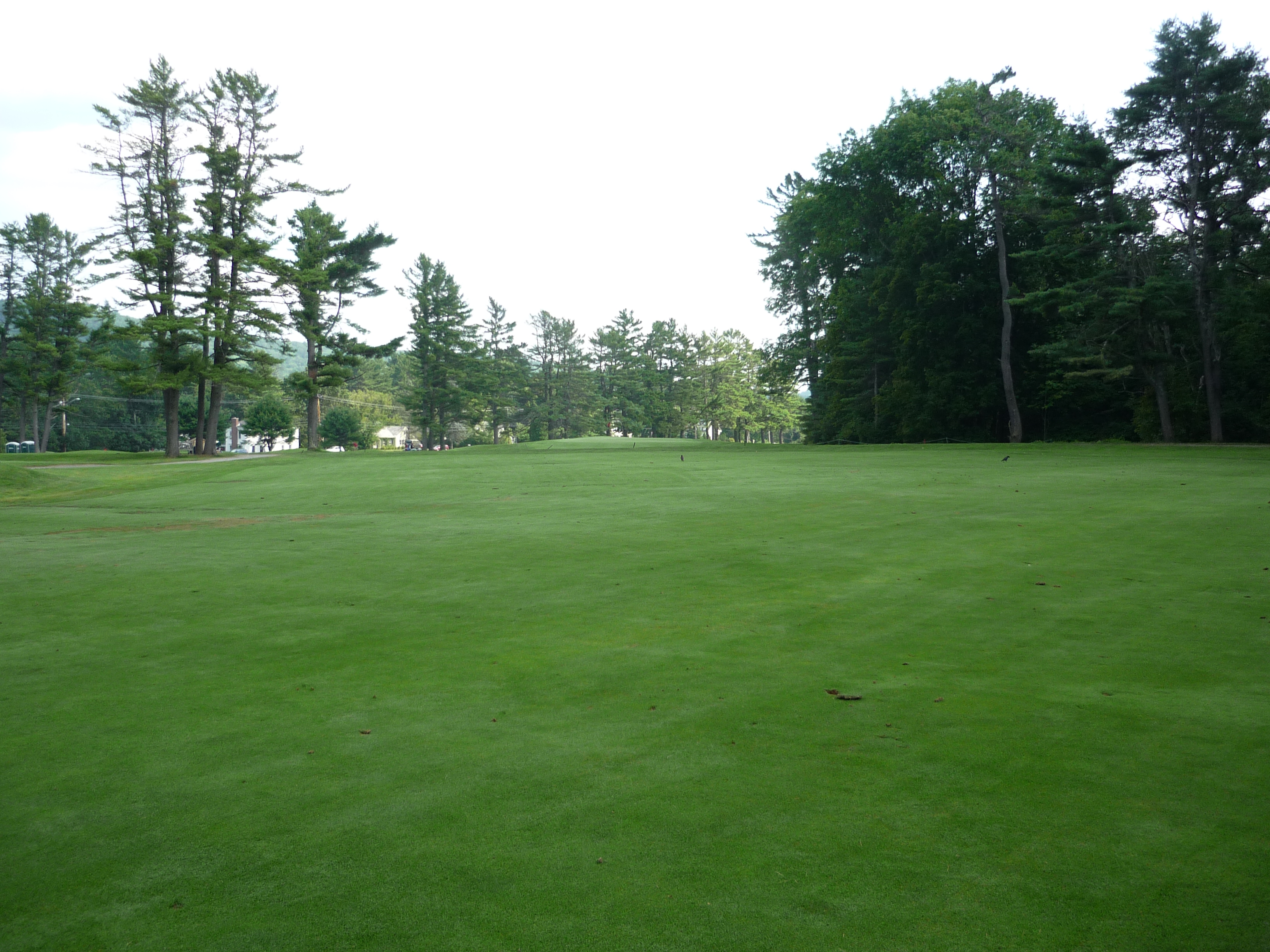
The green is small with an hourglass shape. It fits perfectly to accept short third shots. Anyone long enough to get home in two will force a tough task to hold the green.
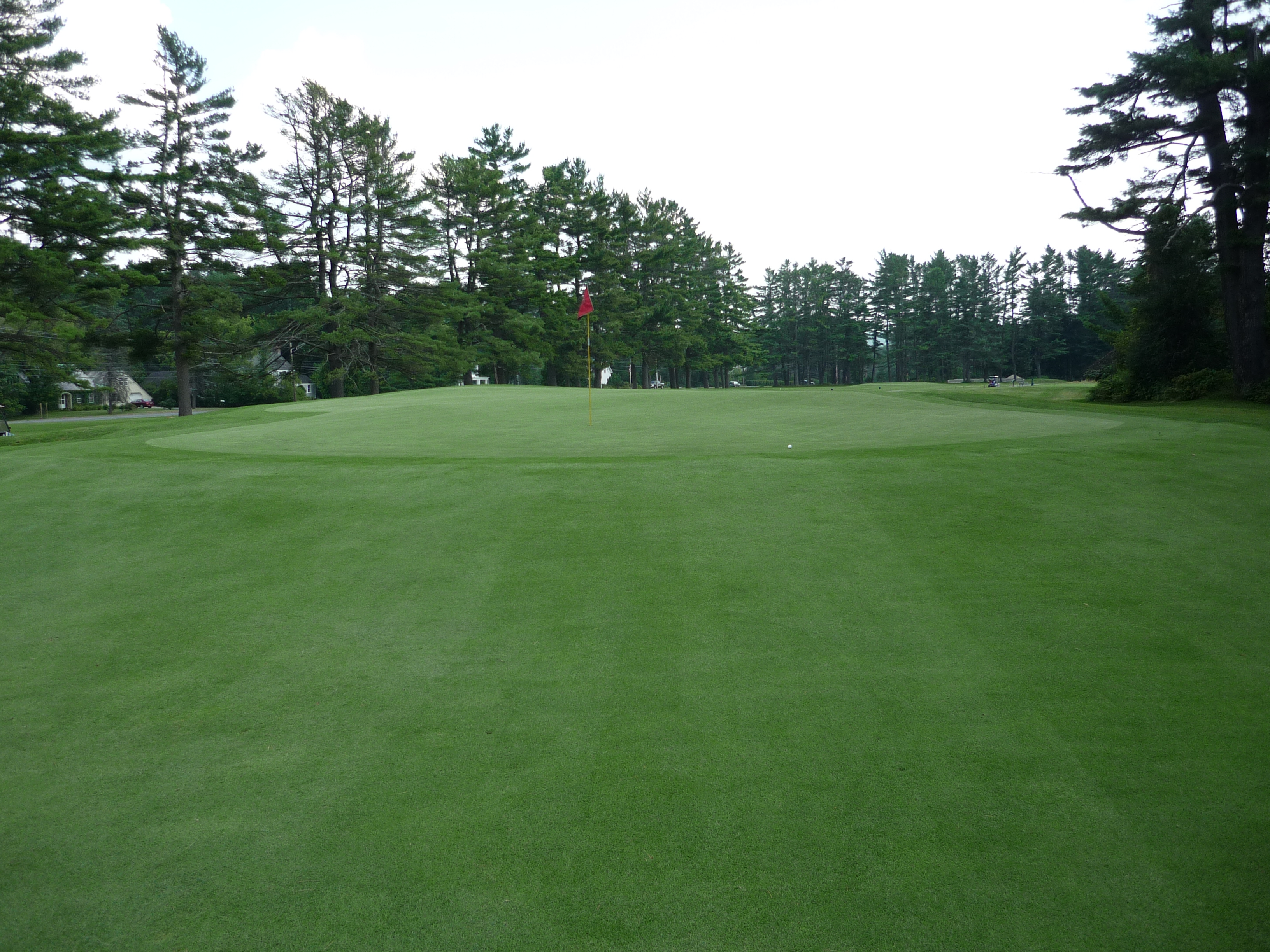
Hole 16 – 412 yards – Par 4
This shot plays downhill to a diagonal fairway. This visual representation was a change of pace from a lot of the straightaway par fours we have seen so far.
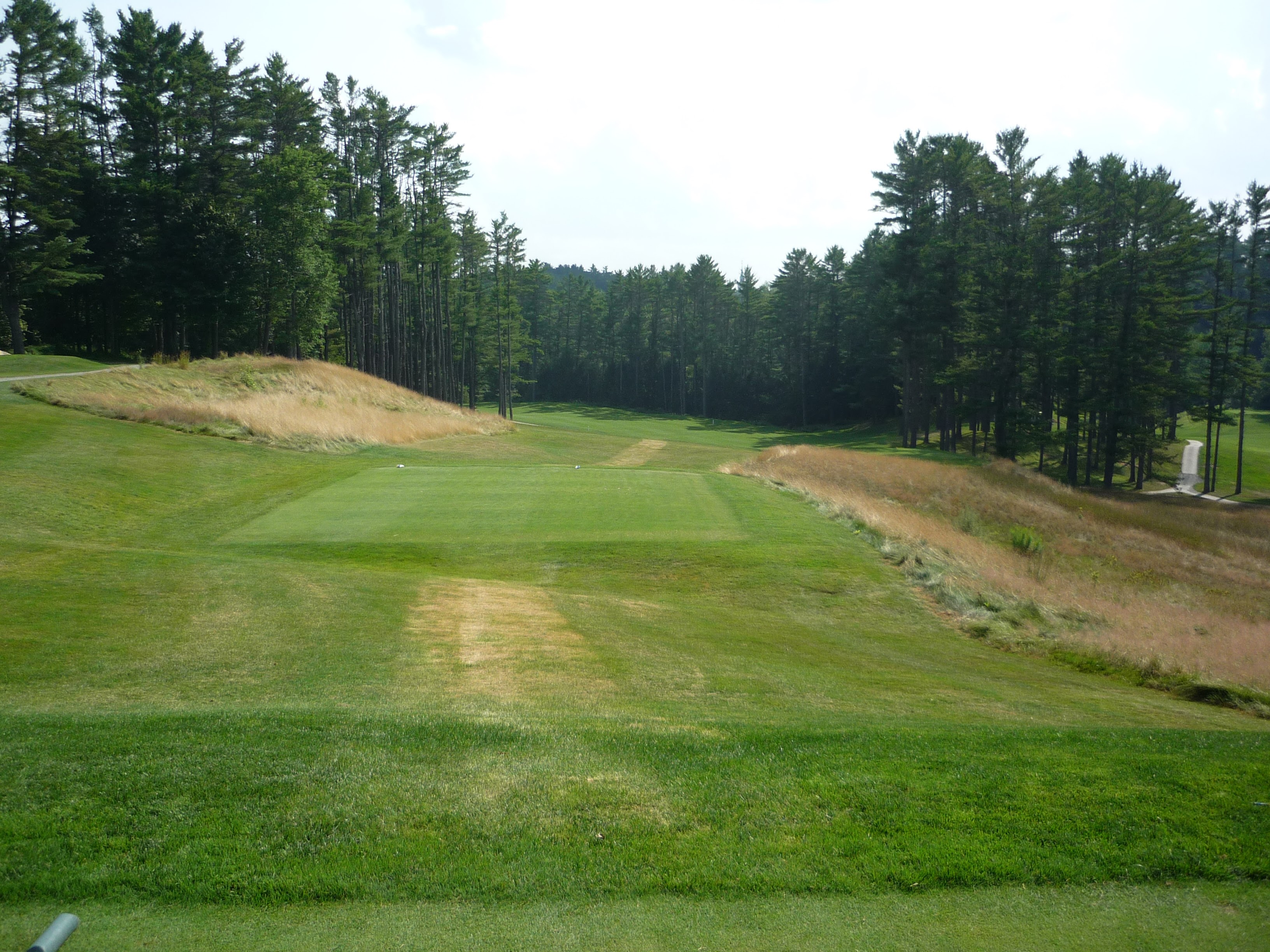
Here is your humble writer going Freddy-style with no glove.
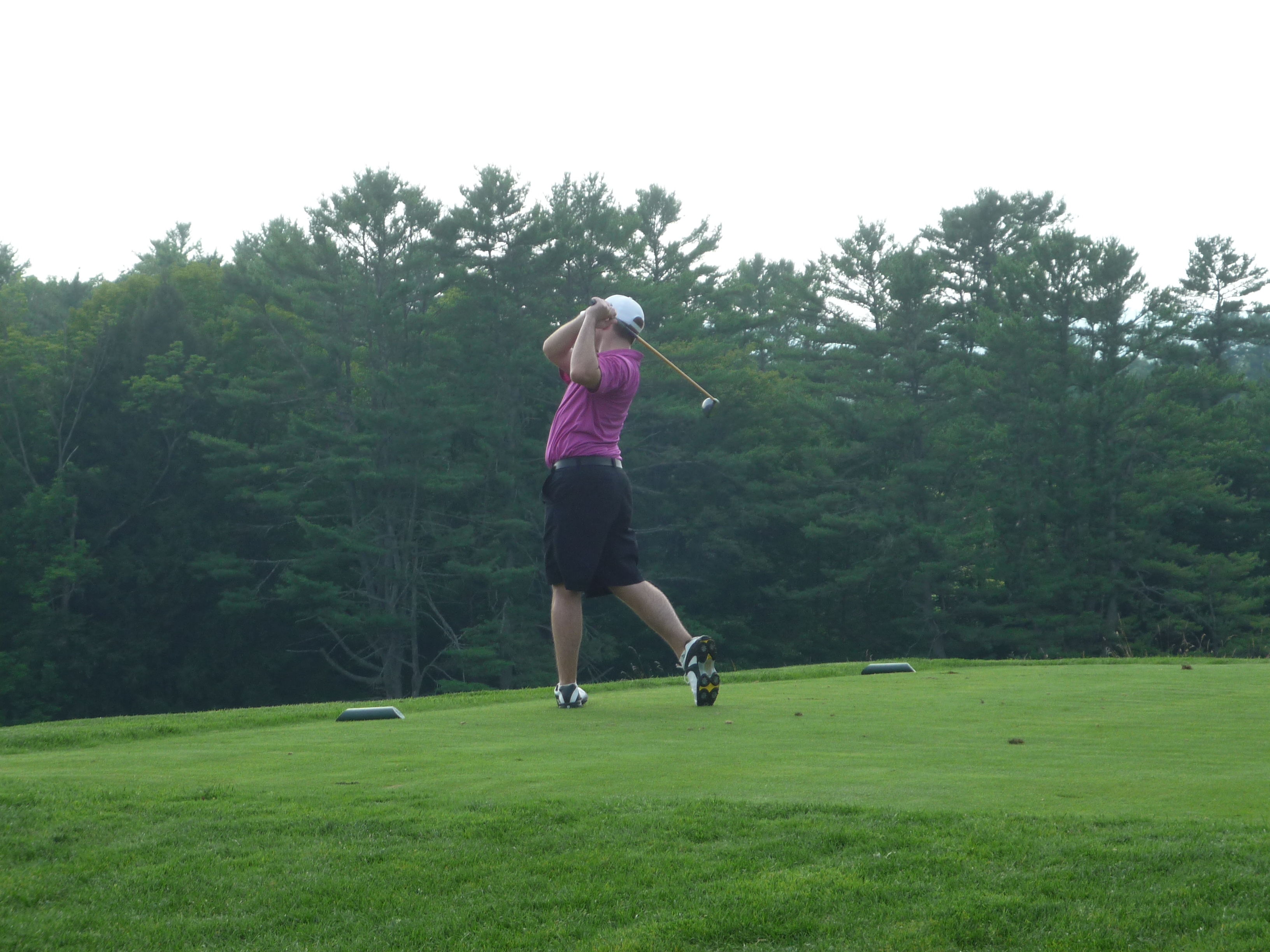
The green is raised with bunkers to the left. Those traps are well below the green and not a good place to be.
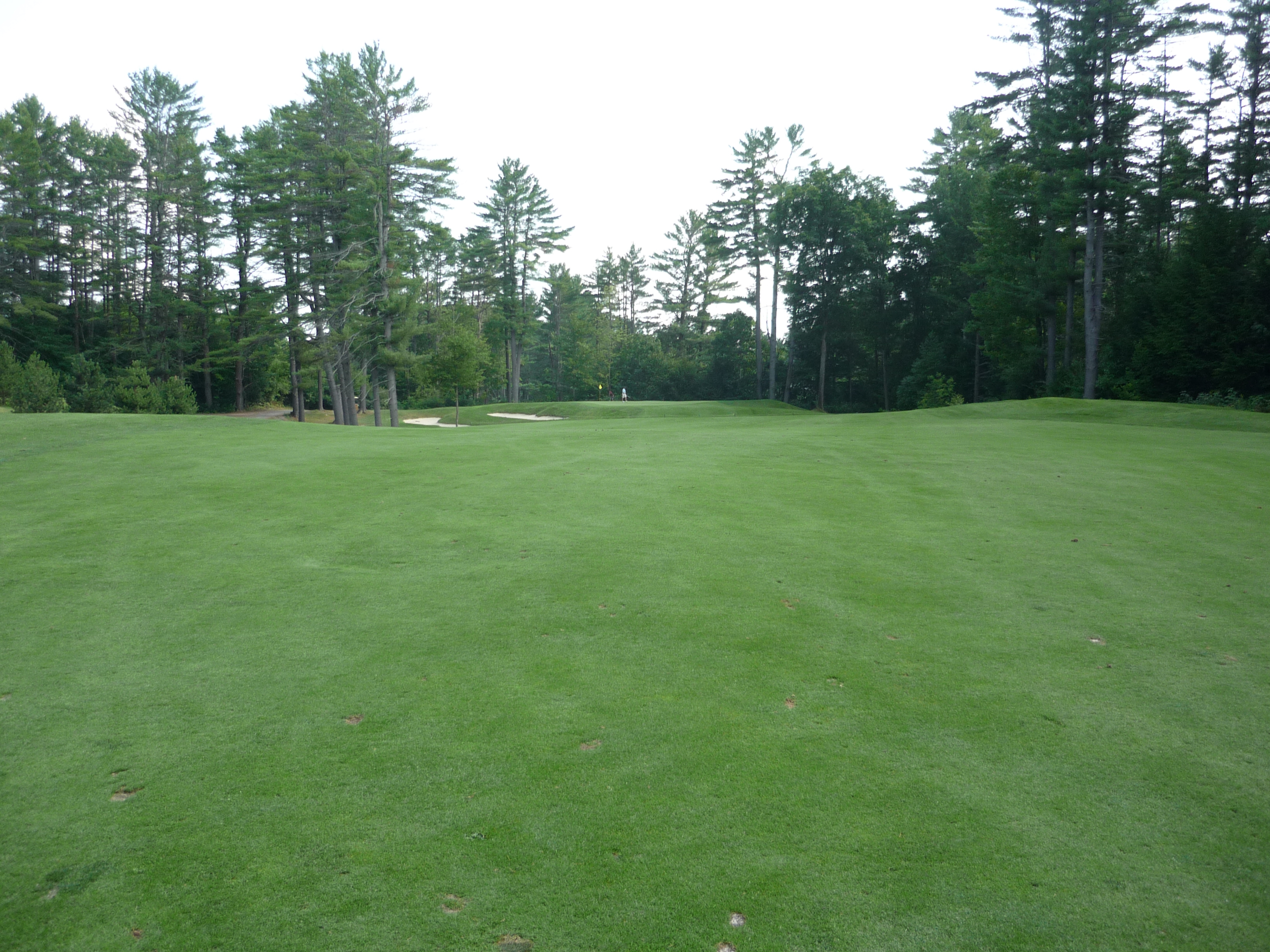
The green has a ridge running through the middle of it and necessitates being on the right portion to have the best chance to hole a putt.

Hole 17 – 517 yards – Par 5
This hole can play as a par three, four, or five depending on how the tees are set up. On this day it was a par five and calls for a nice drive up the middle.
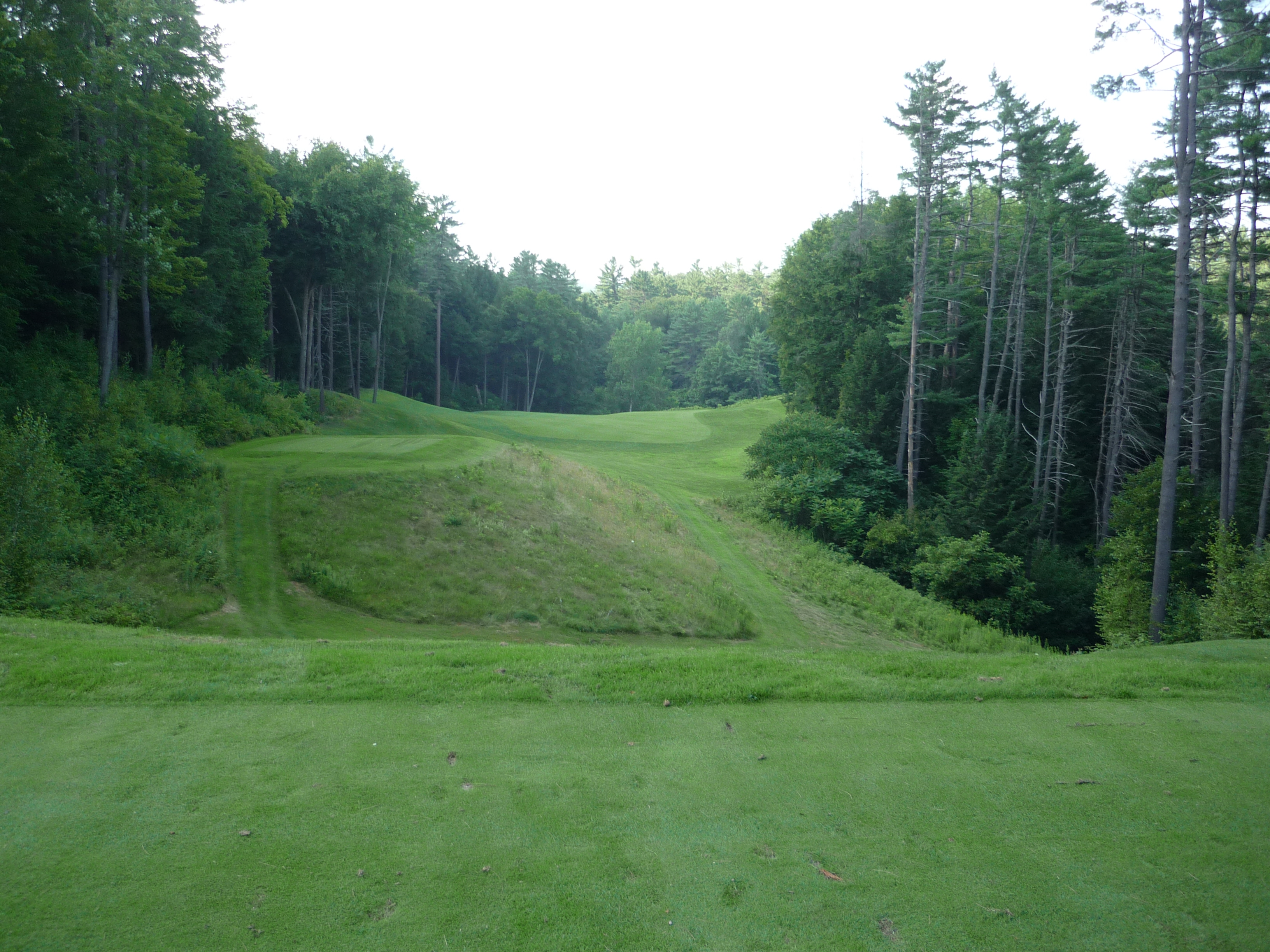
The second shot plays over a large ravine to a large fairway.
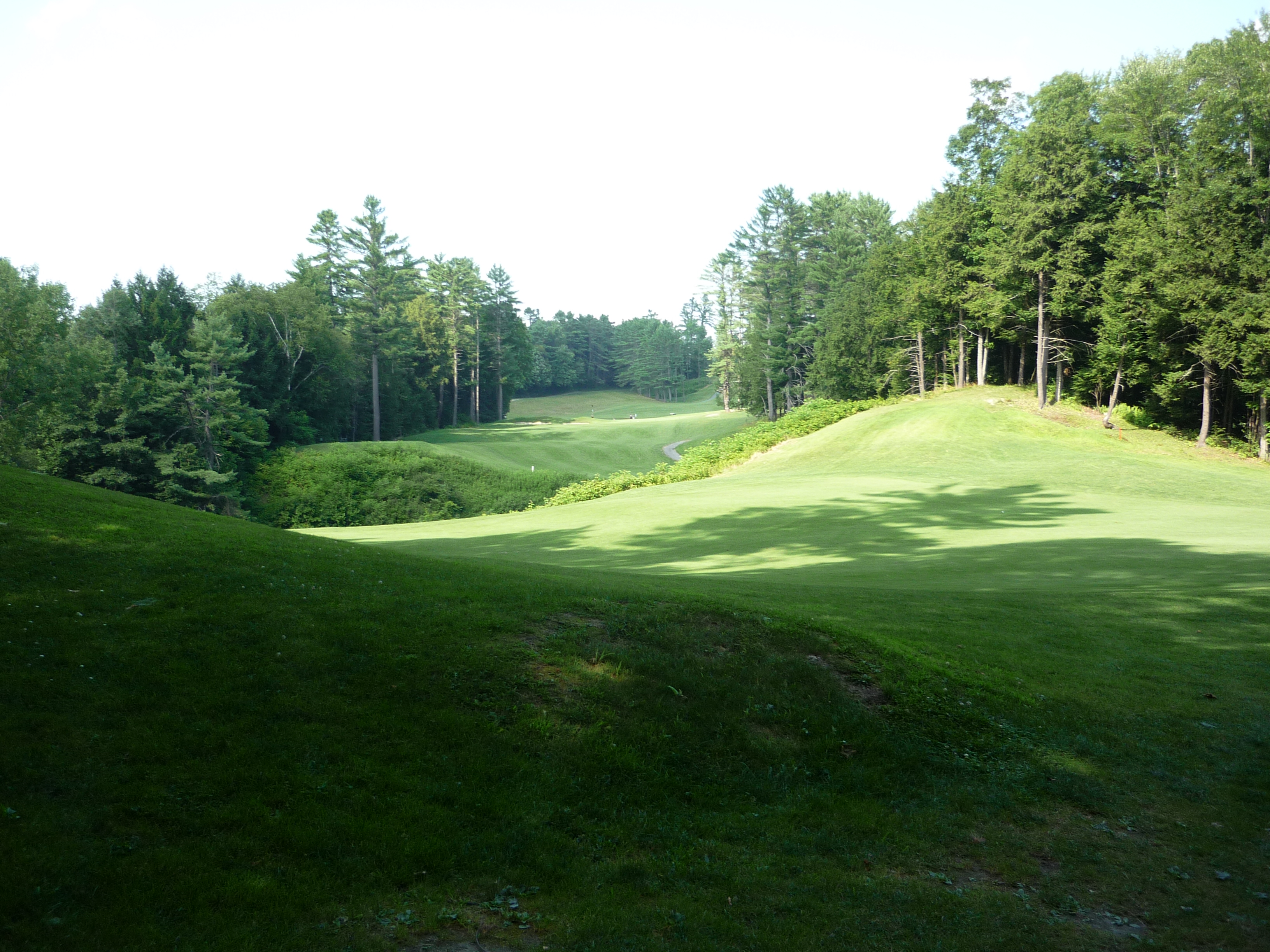
The approach shot is ever so slightly uphill to a fairly unprotected green. Go flag hunting here.
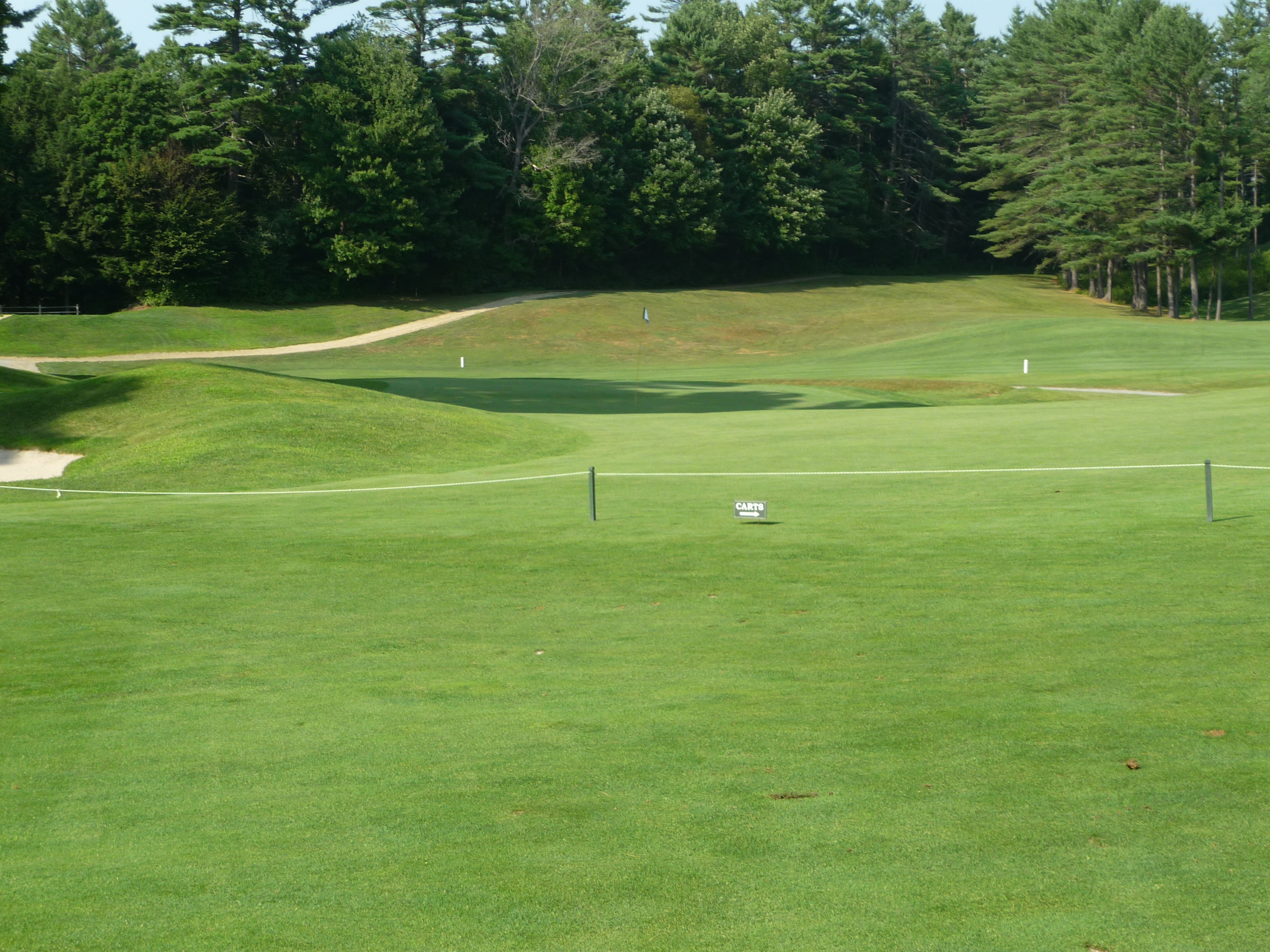
Once on the green, the putt should be pretty makeable due to the lack of substantial slope.
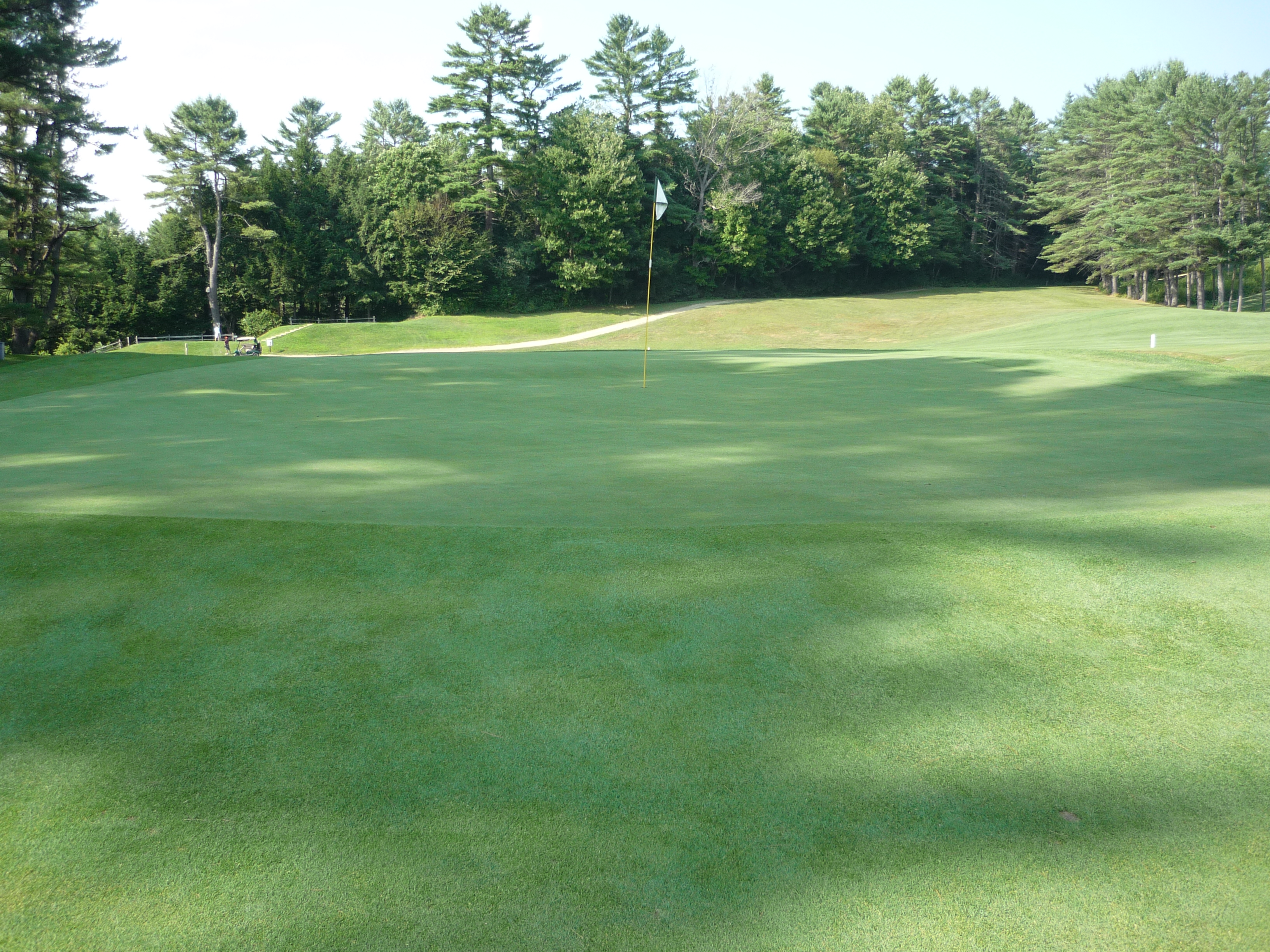
Hole 18 – 471 yards – Par 5
Hanover Country Club finishes with back to back par fives. The tee shot seen here is more visually intimidating than it actually is in person. A little draw works well here.
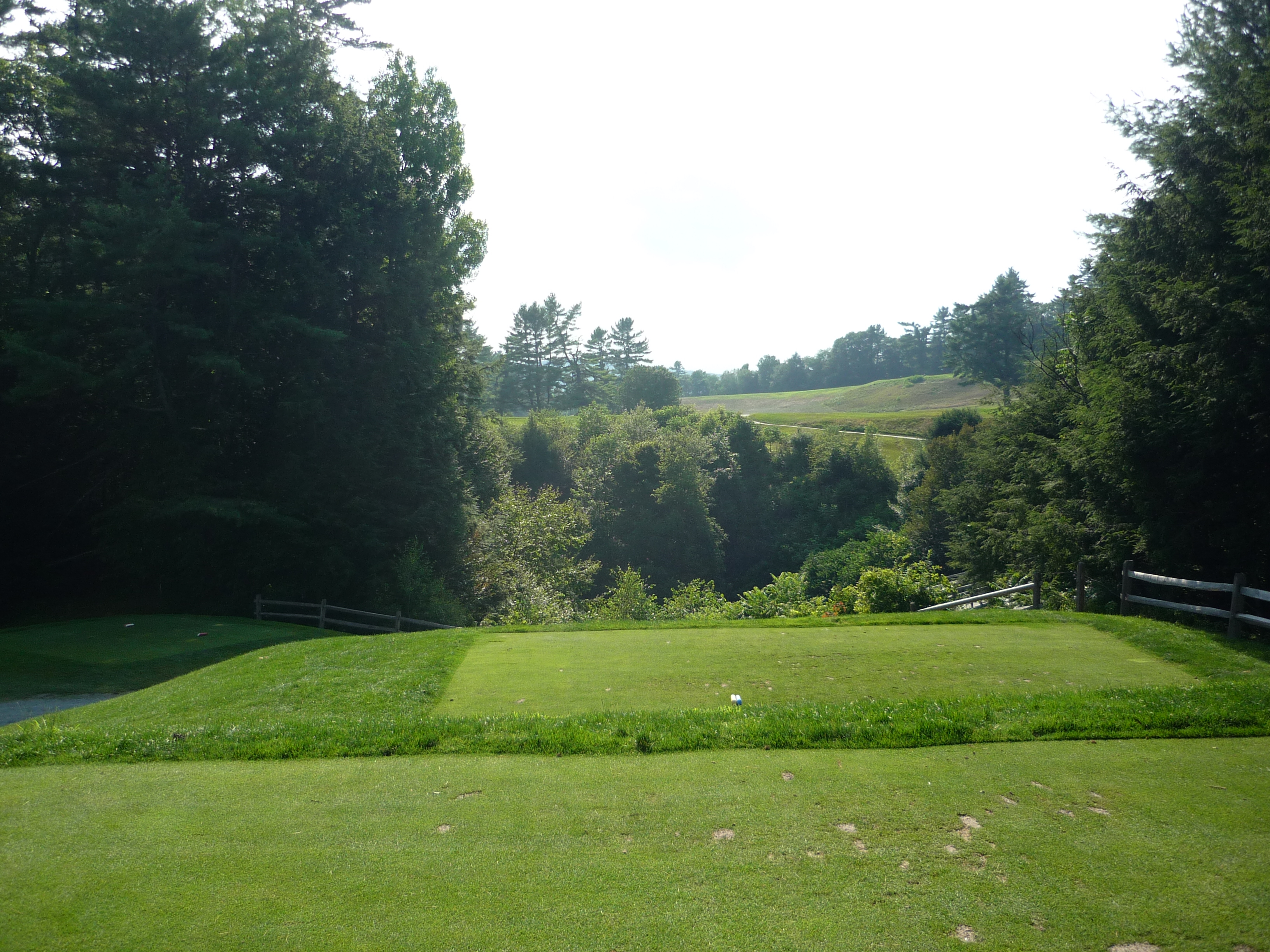
The layup is much tighter than the tee shot with out of bounds left and trees hugging the right.
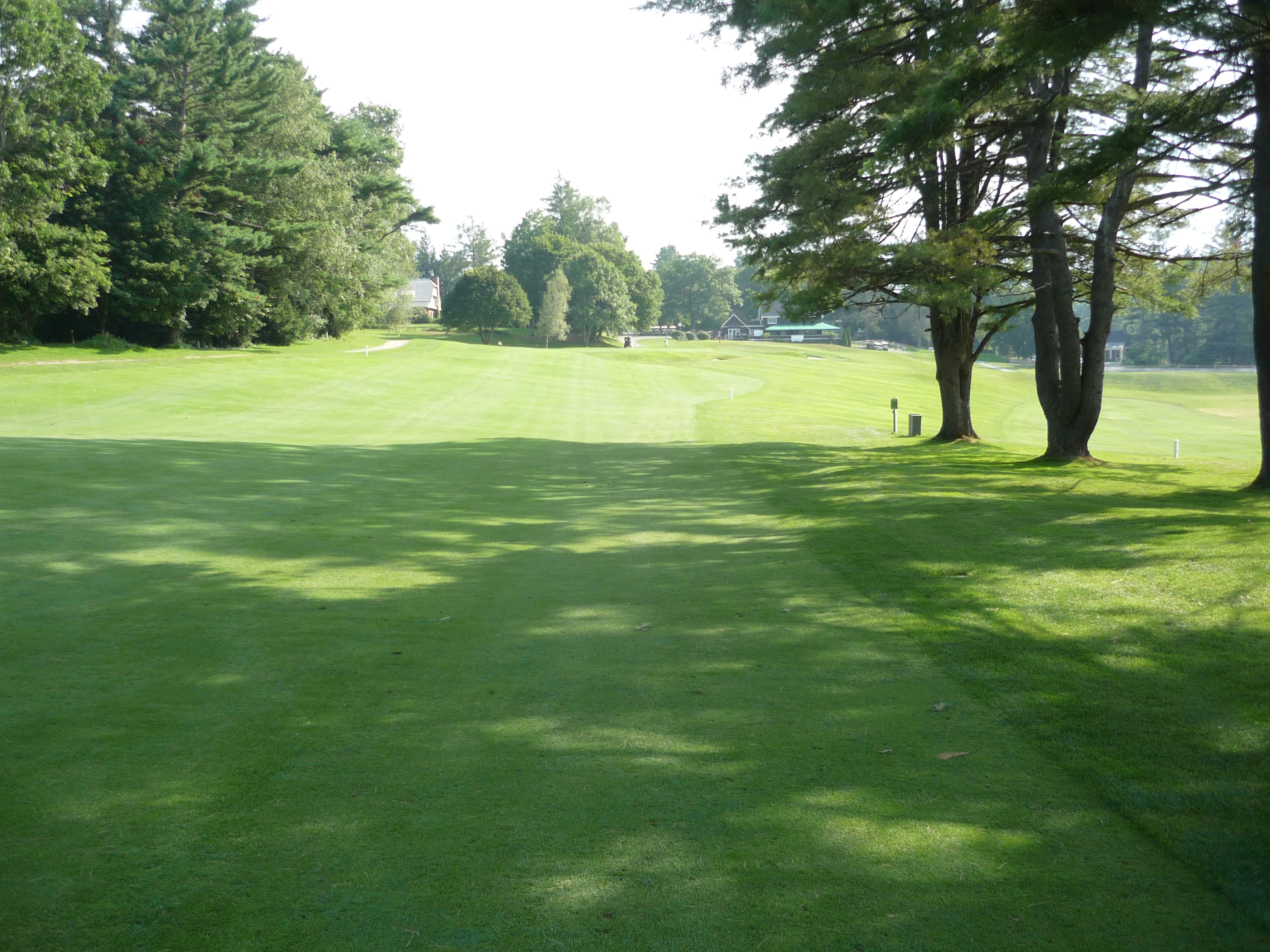
The approach into the green is a little tough on the eyes since you can’t easily see the green.
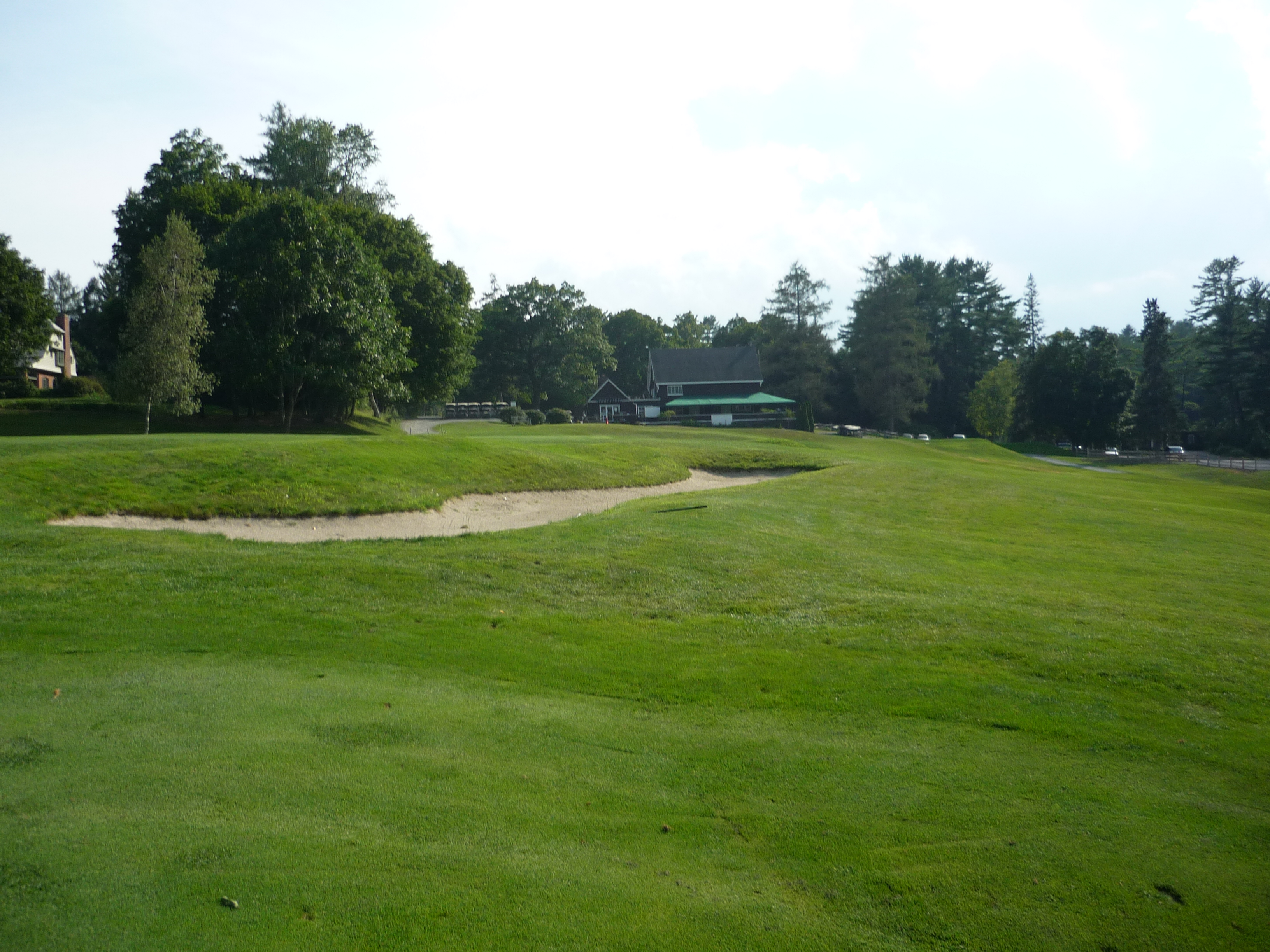
The green has a ridge that creates a bowl in the front left of the putting surface. It is a good green complex to handle wedge shots since you need to be precise depending on where the pin is located.
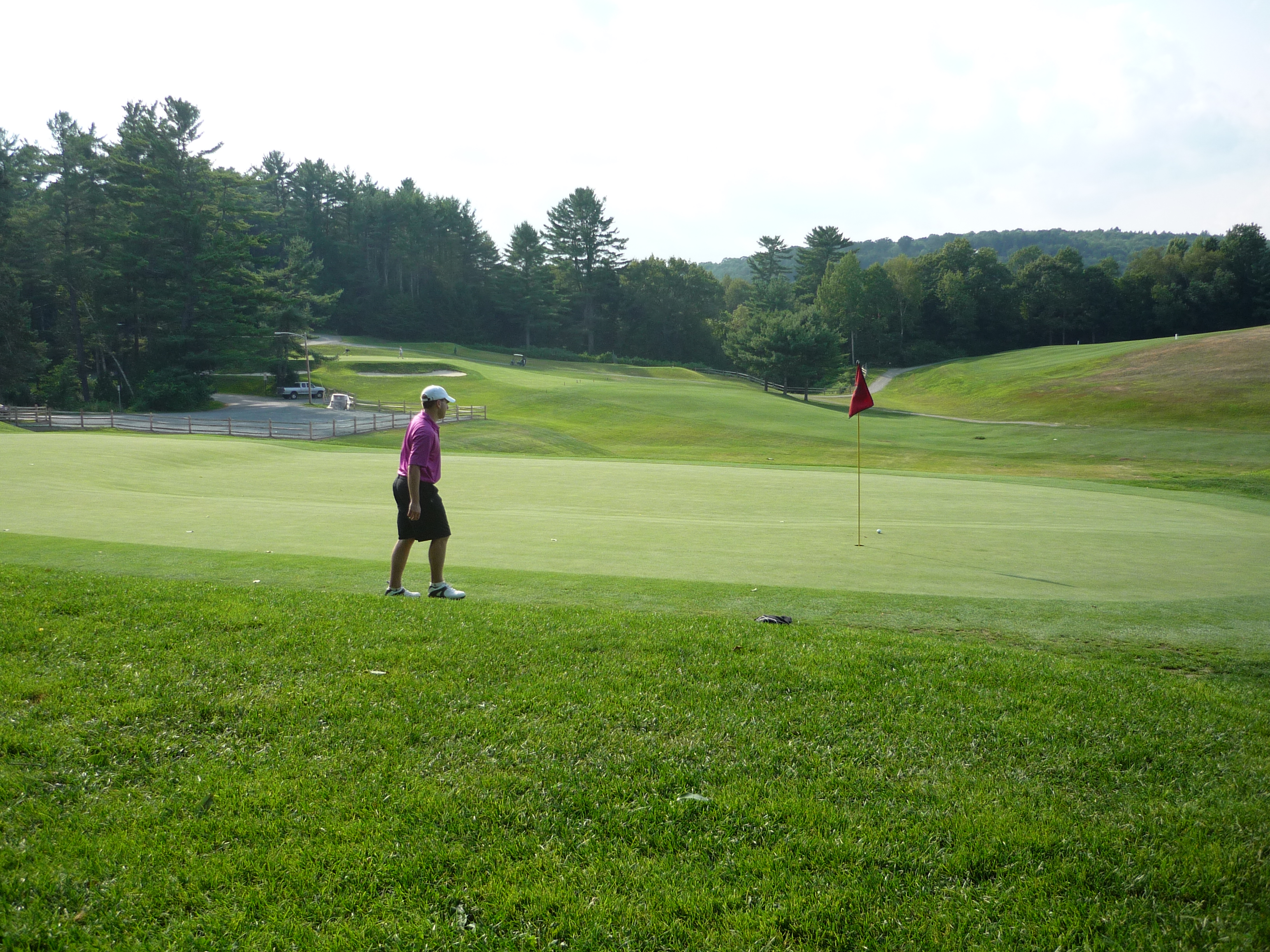
Hanover Country Club was a wonderful old-school golf course. It reminded me a lot of the courses I played while spending the summers in New Hampshire as a child. It had a good mix of tree-lined and parkland holes while the greens allowed for a lot of chances to make putts. Overall, the course is a great asset to the people in town and especially the Dartmouth students. This is a course I would have played all the time had I been a student. I suppose it’s a nice little reward for getting into an Ivy League school. Should you find yourself in the area, make a trip out and enjoy a round.

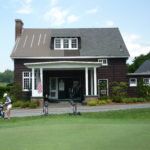
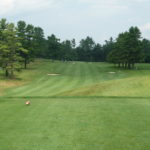
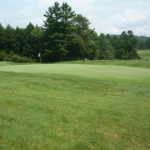
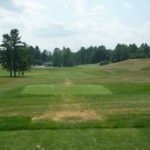


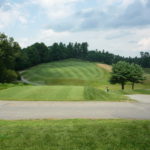
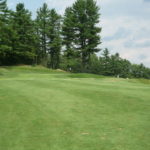
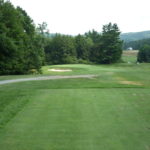
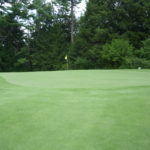
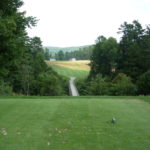
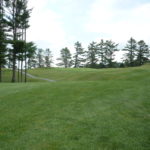
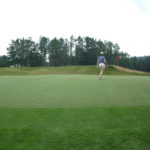
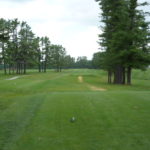
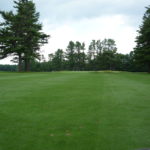
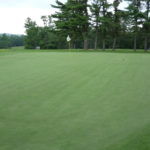
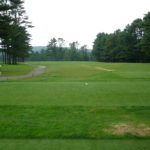
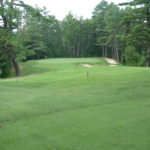
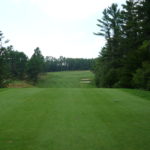
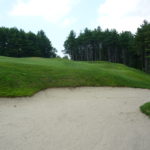
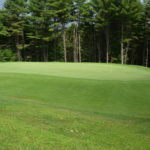
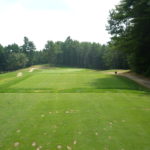
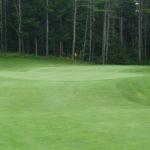
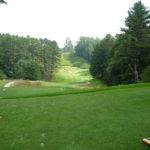
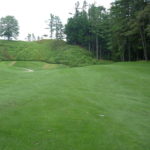
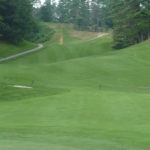
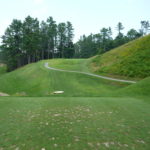
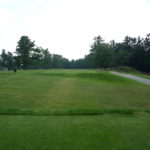
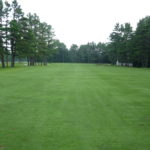
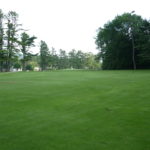
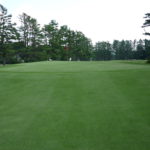
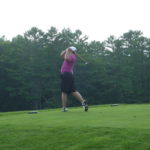
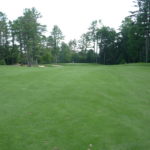
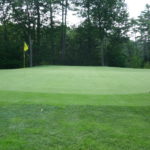
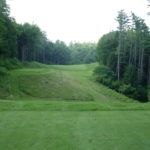
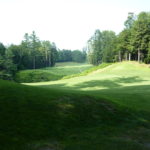
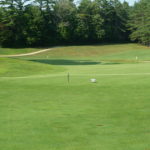
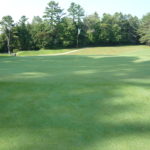
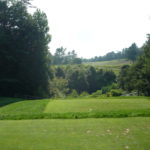
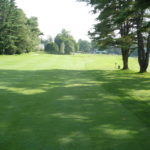
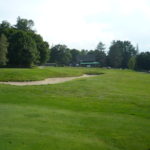
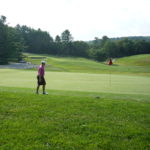
1 thought on “Hanover Country Club”